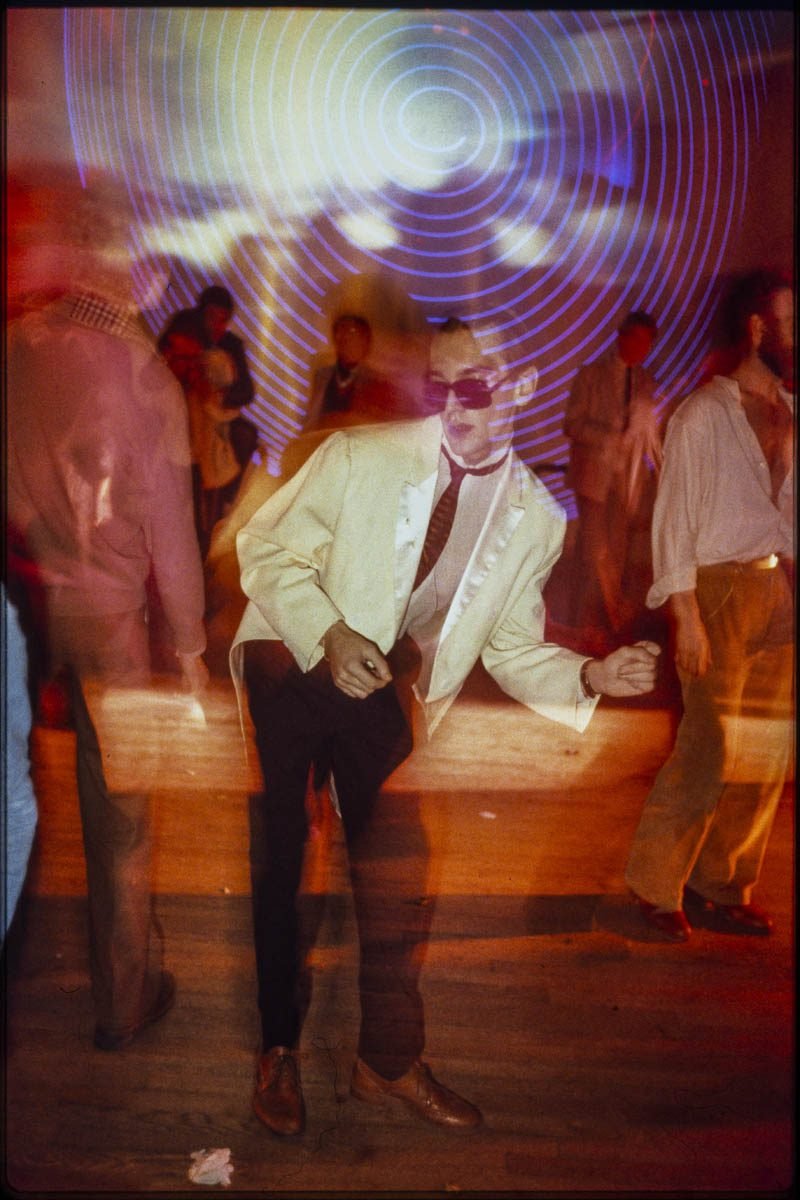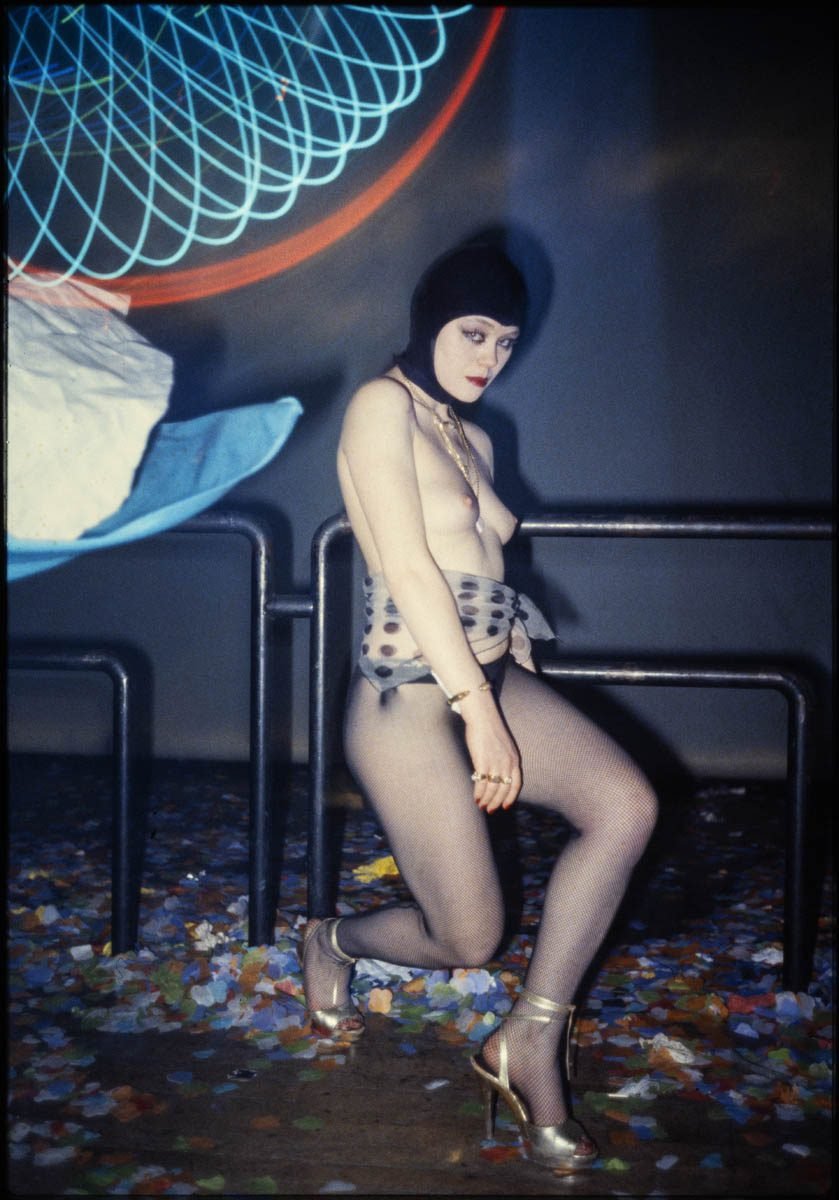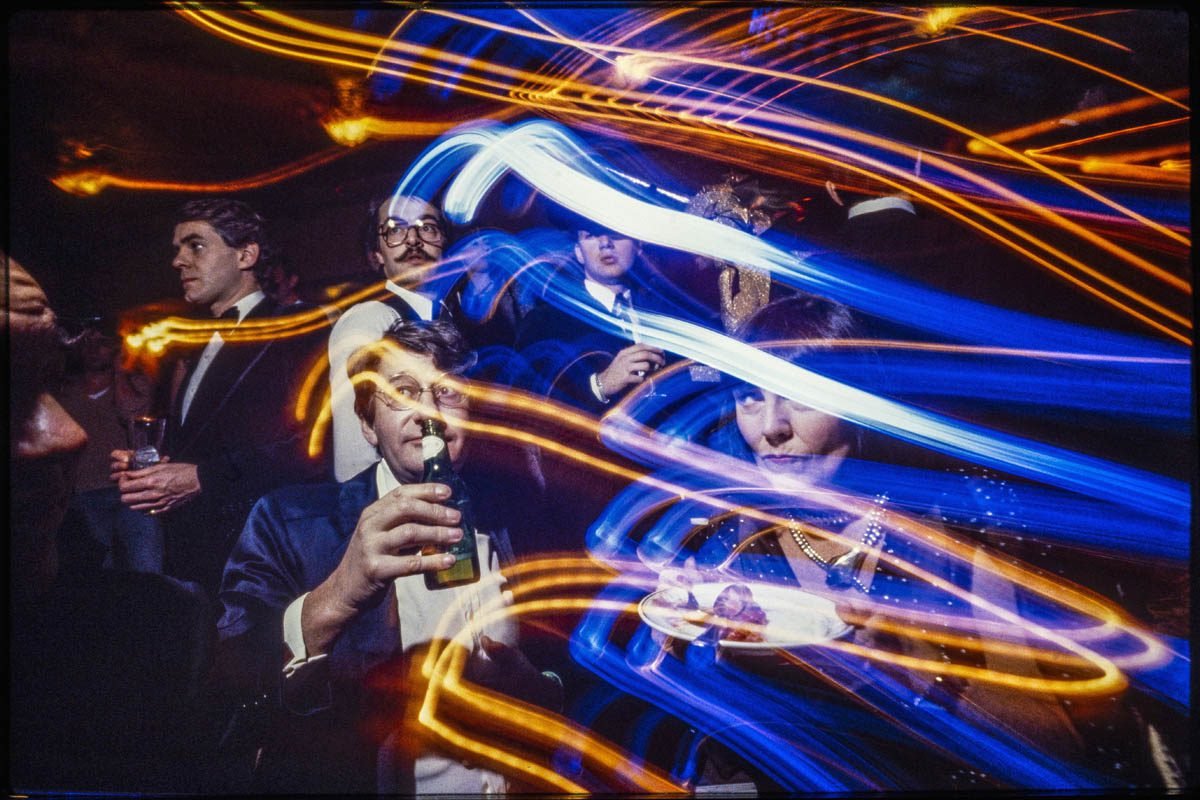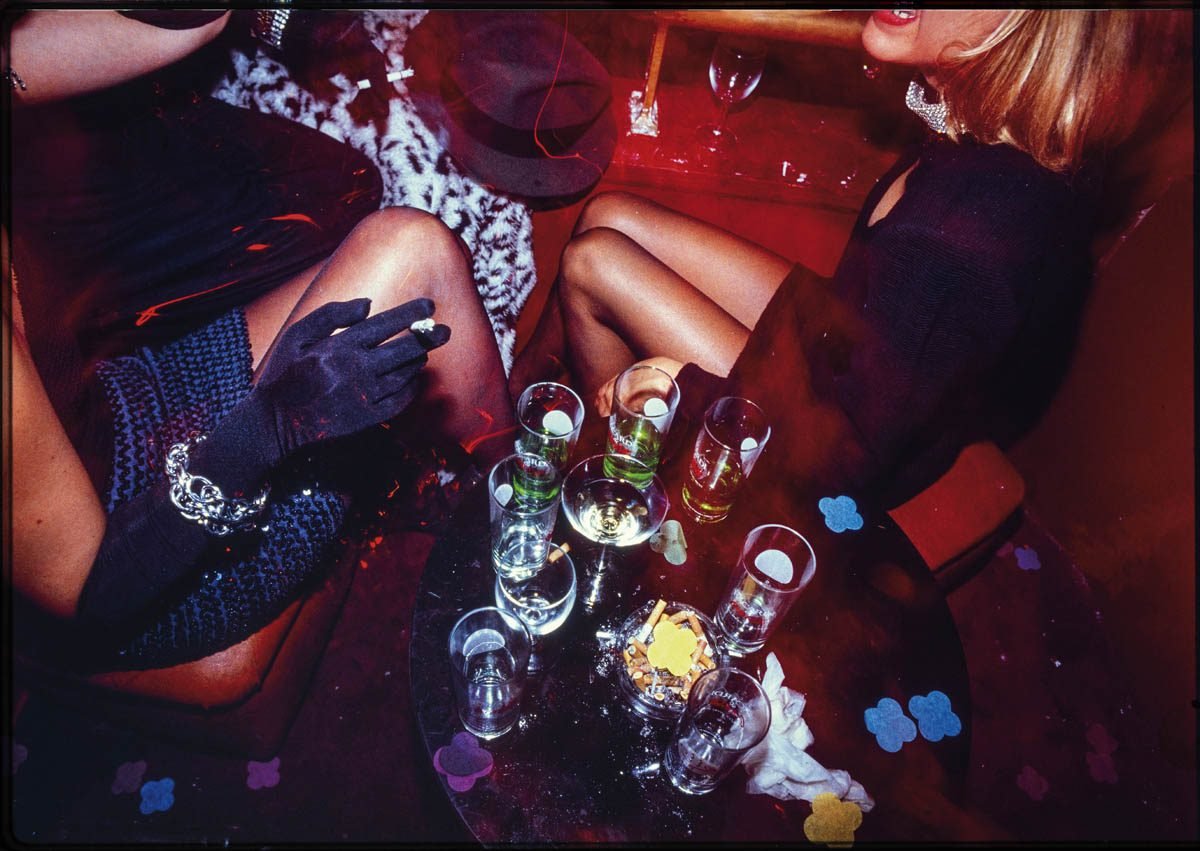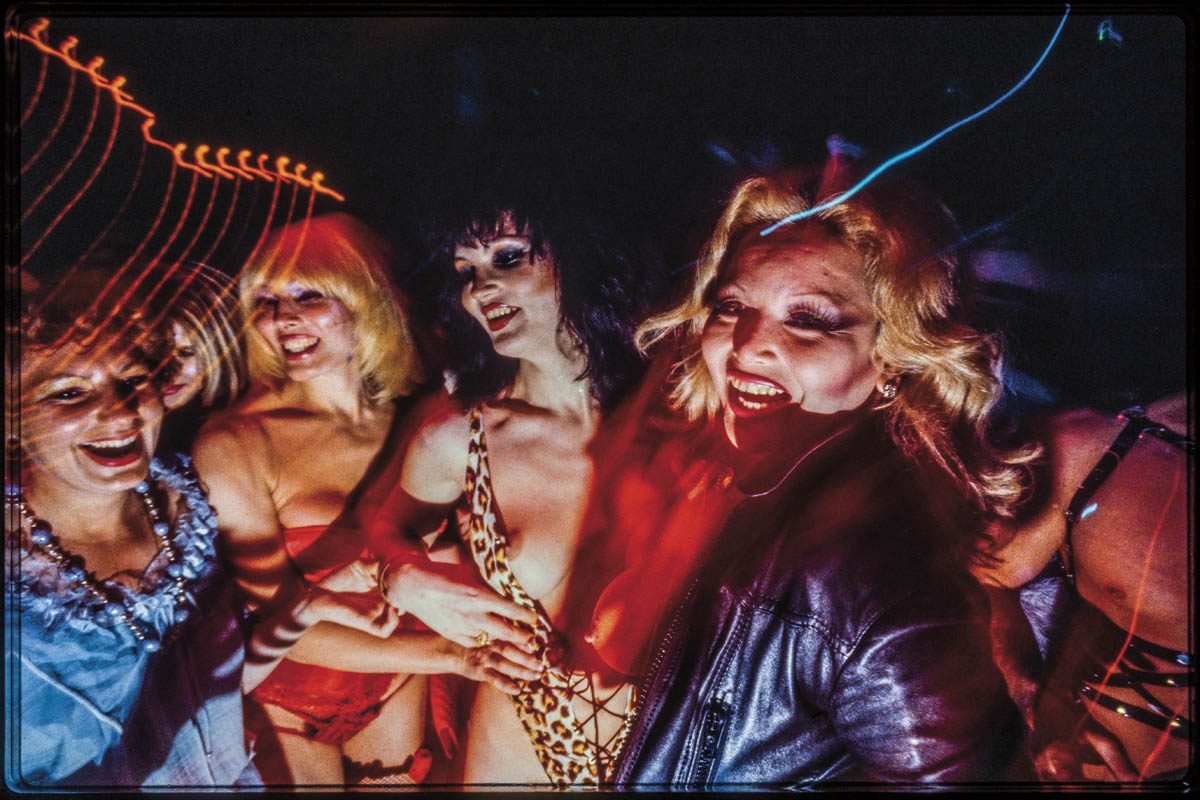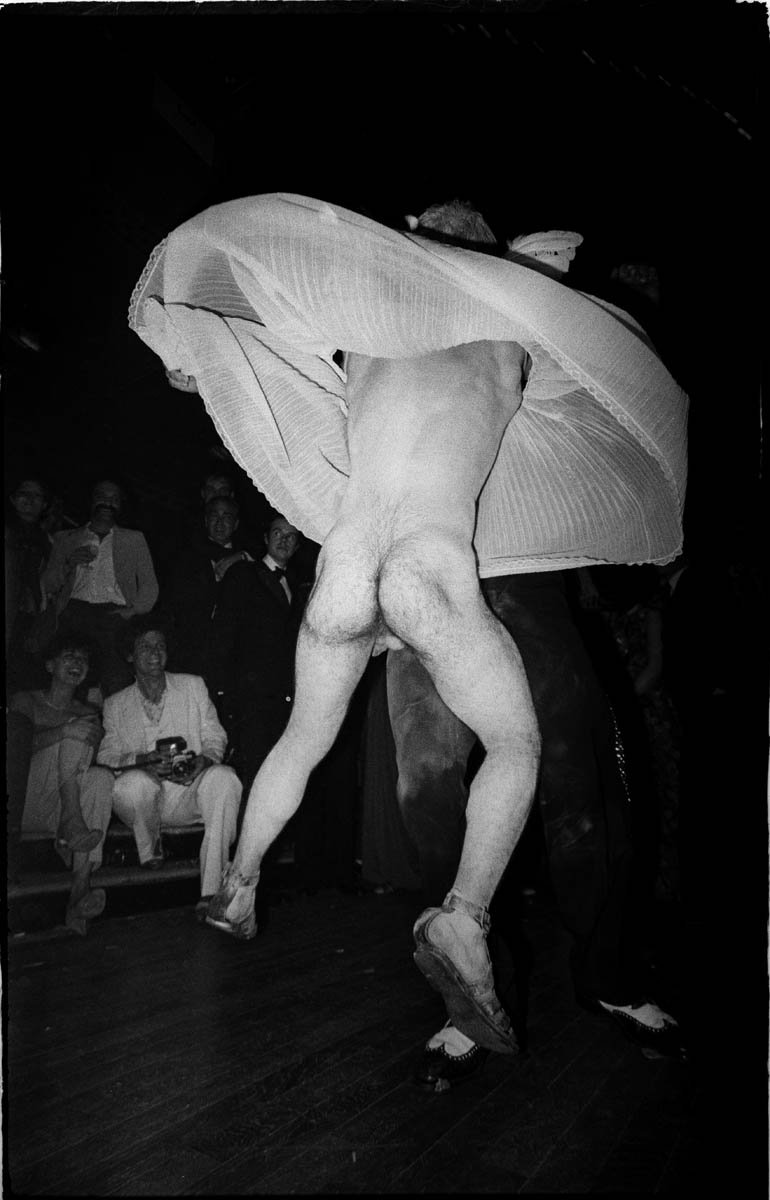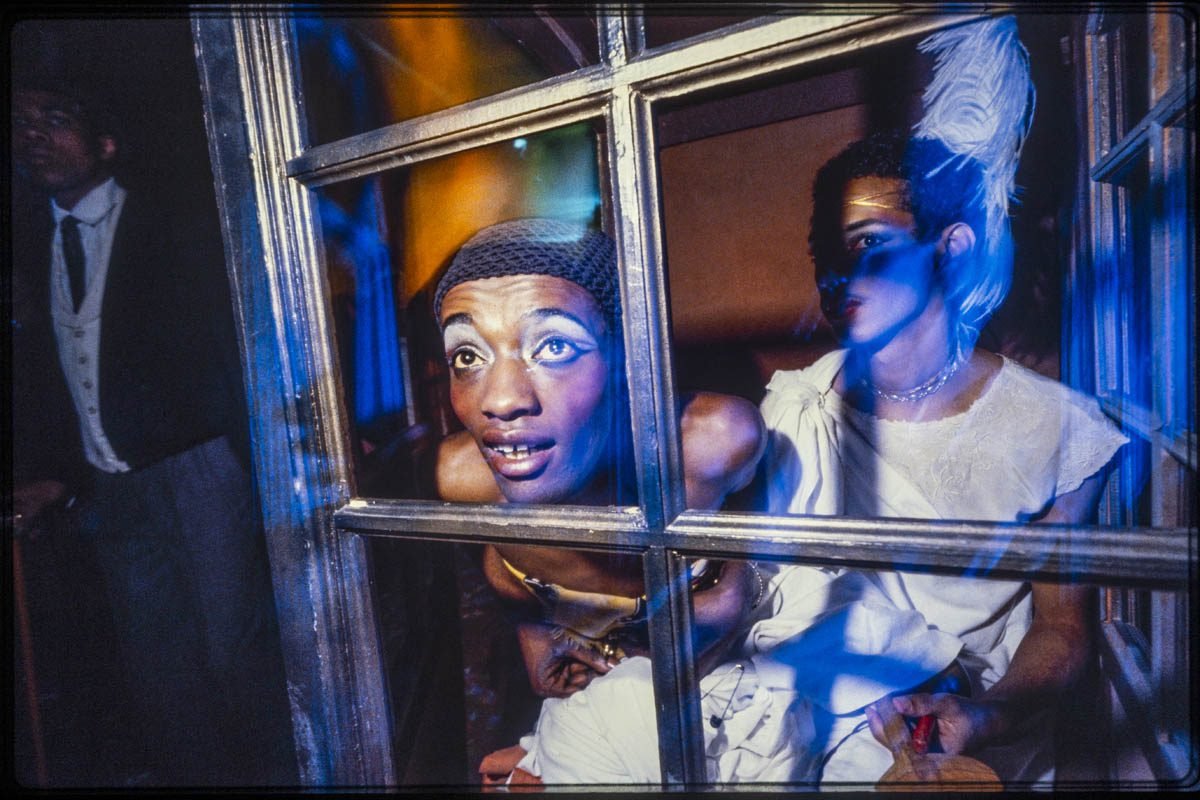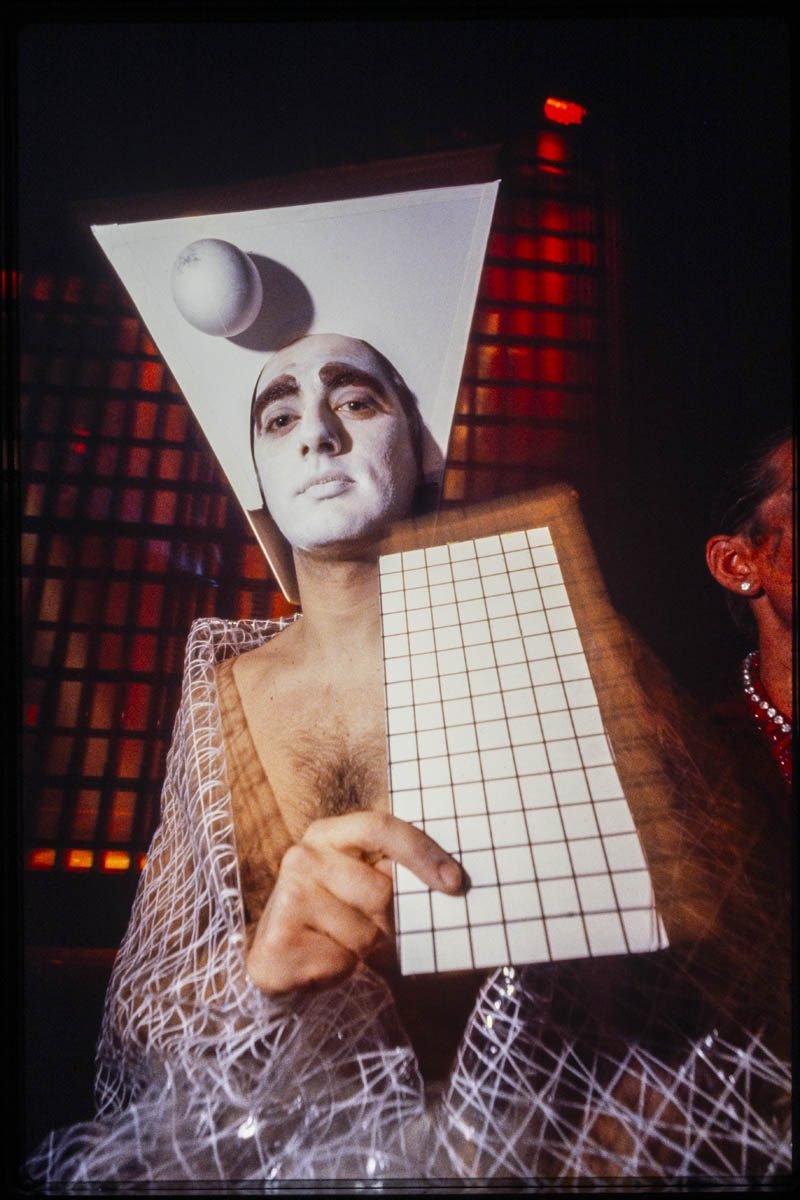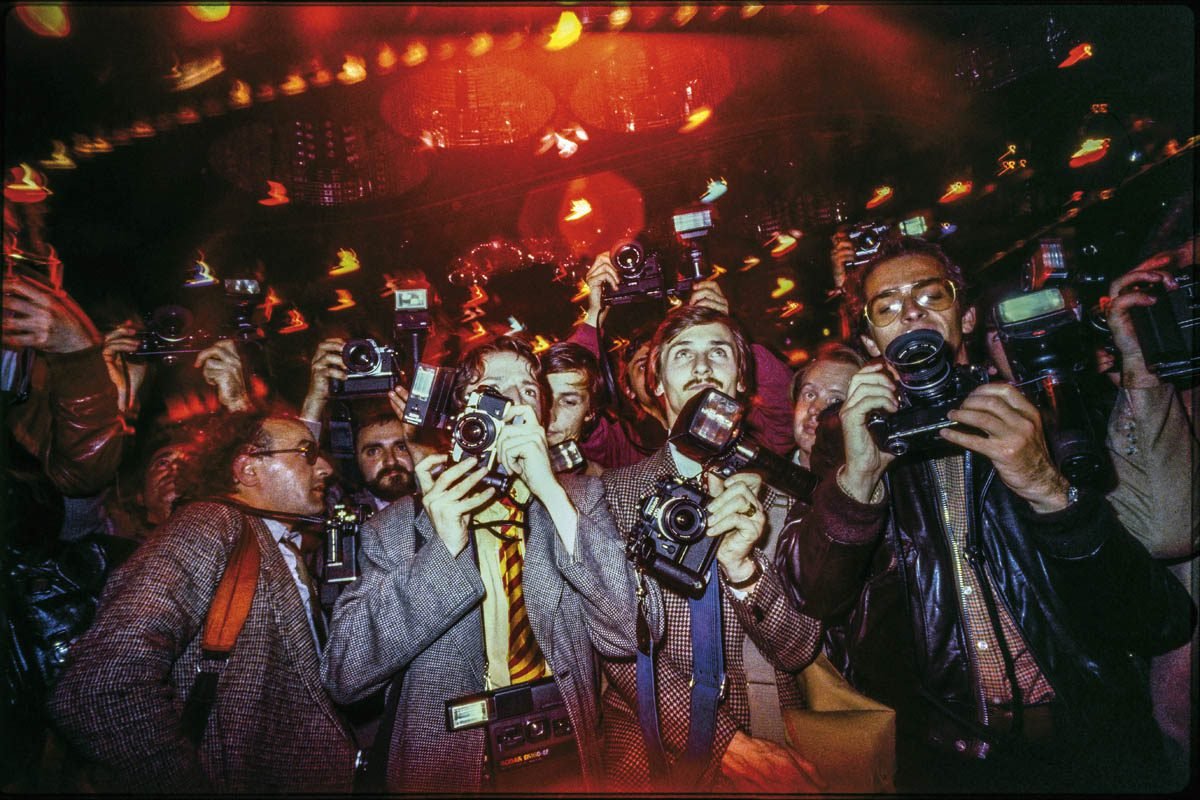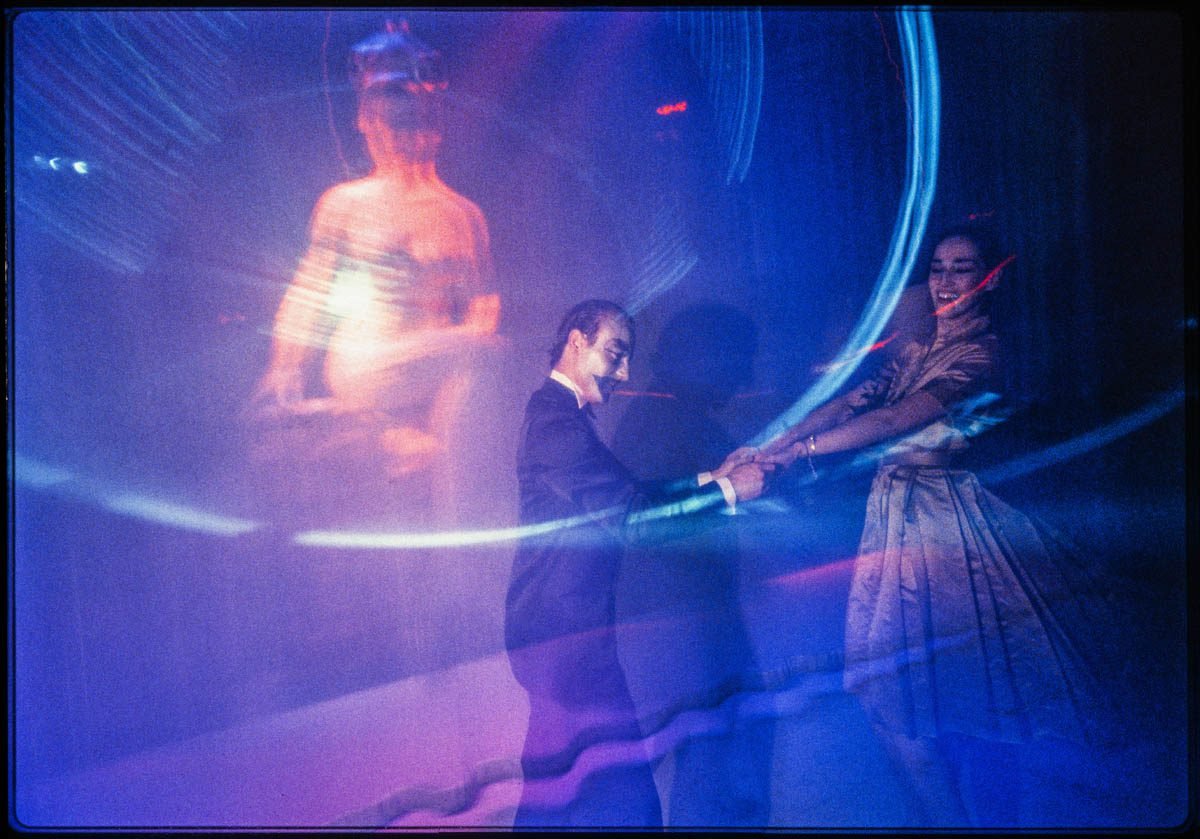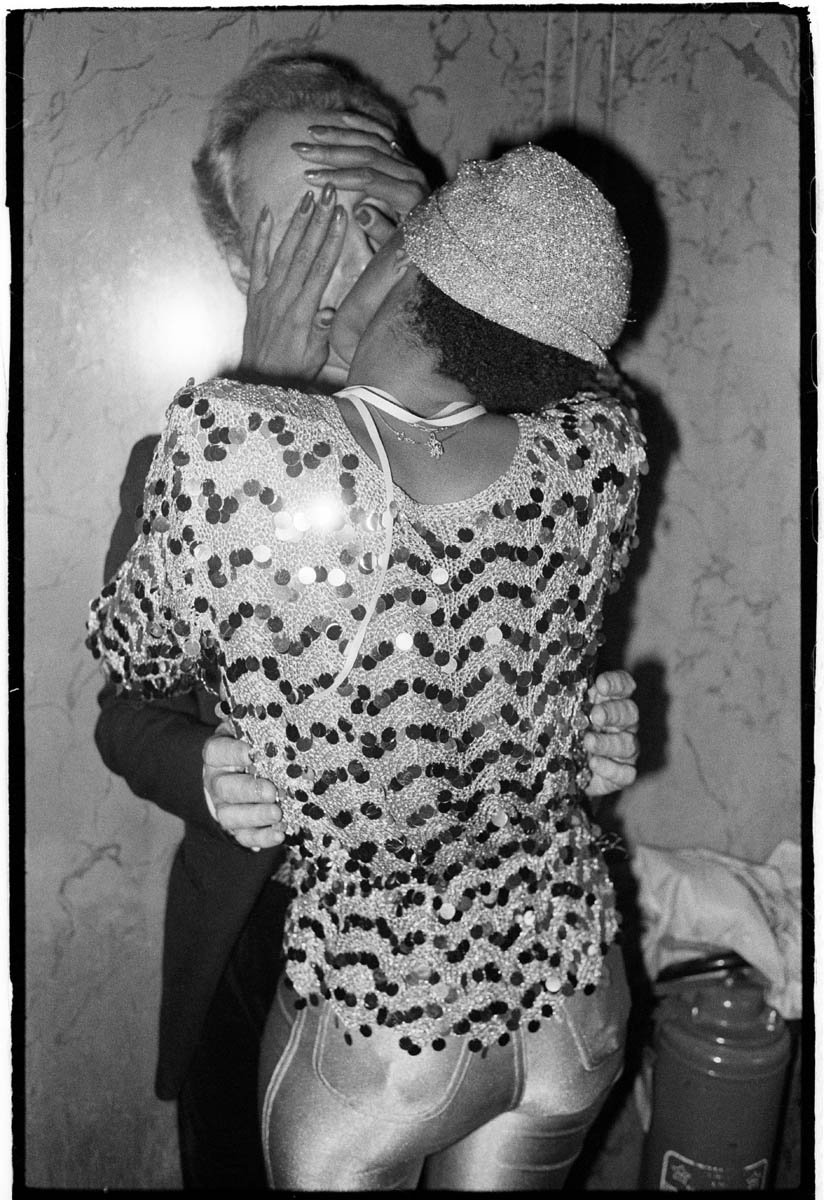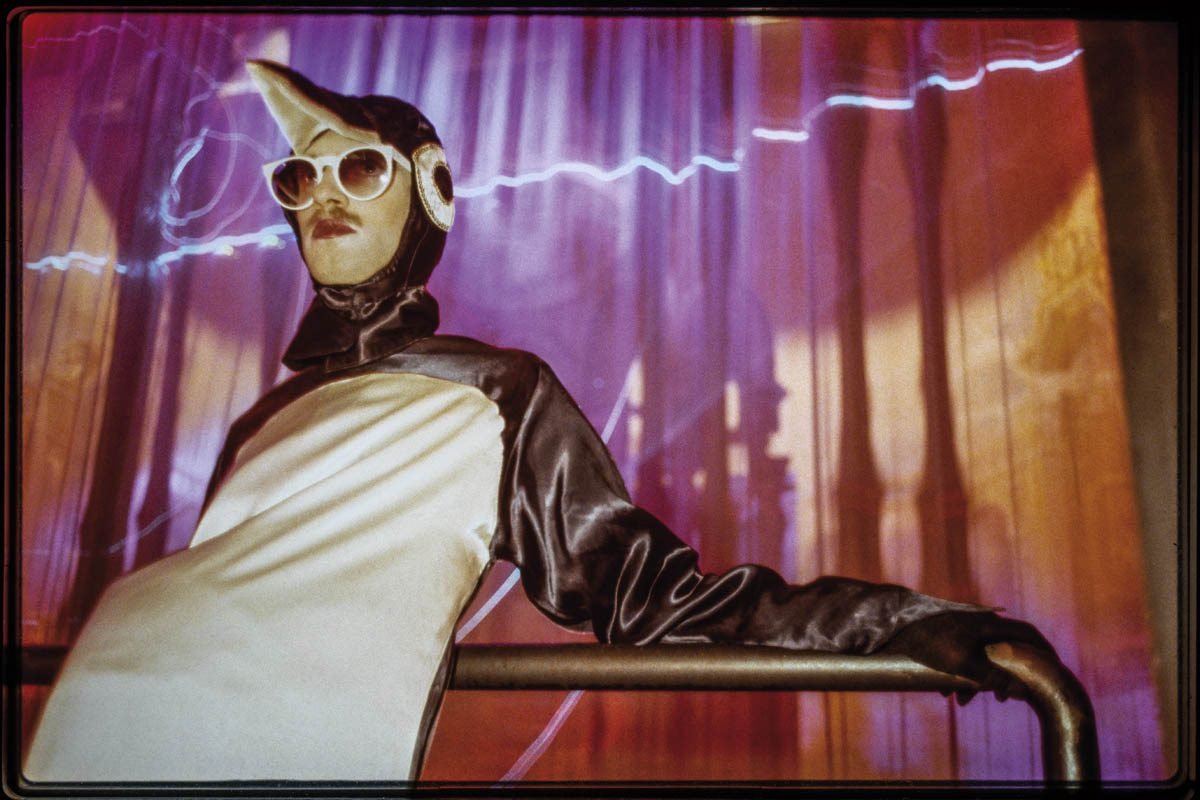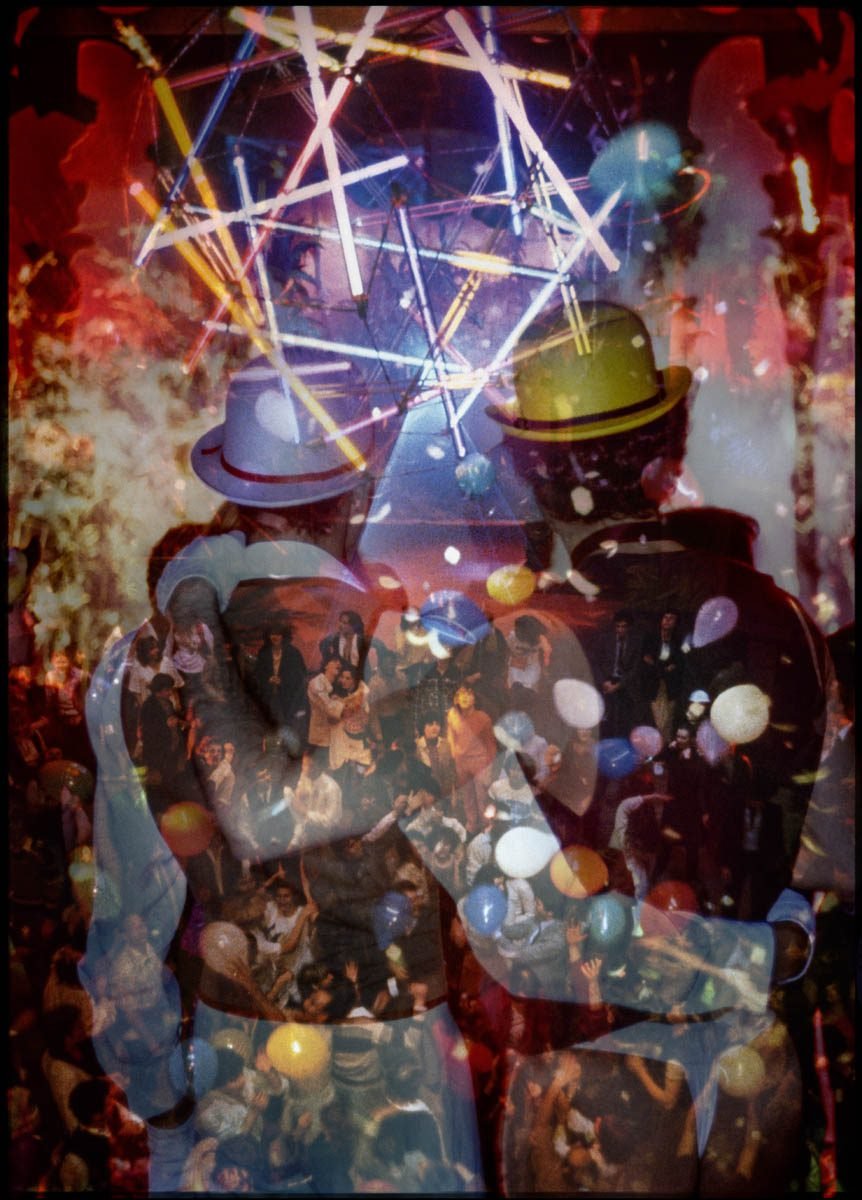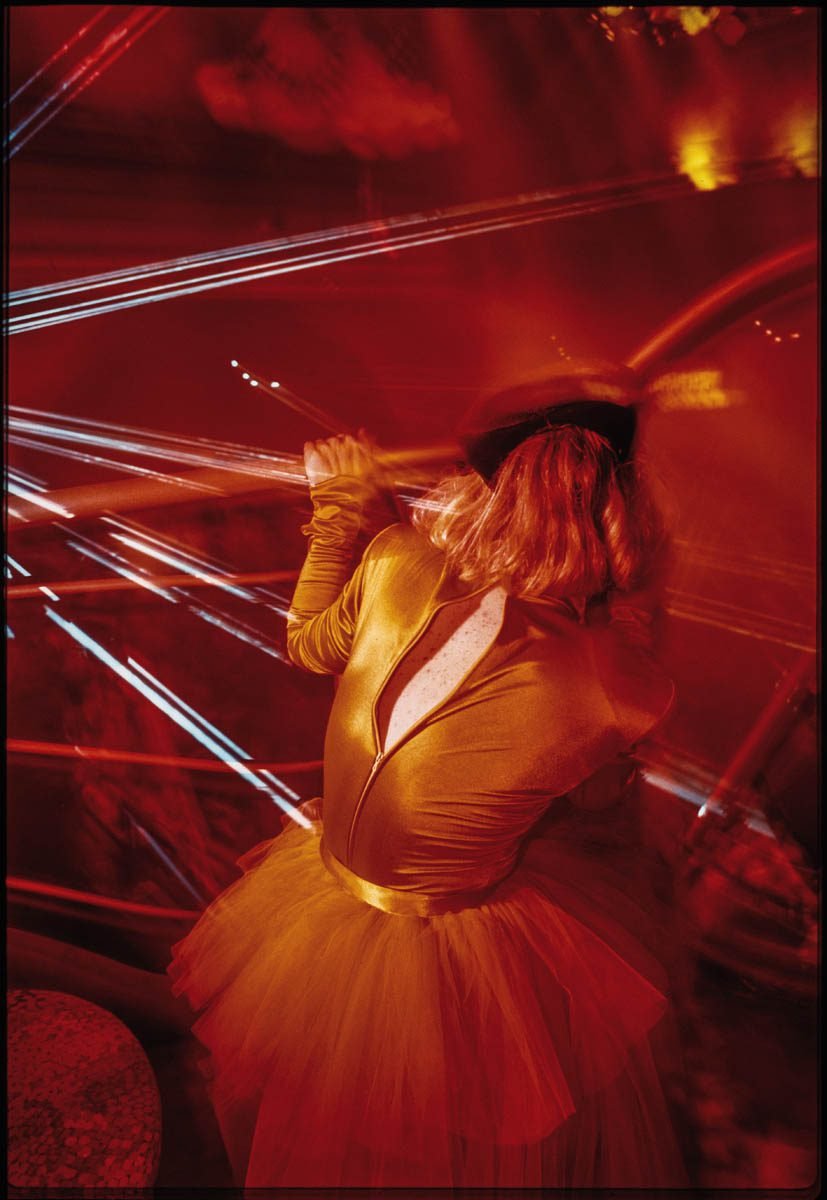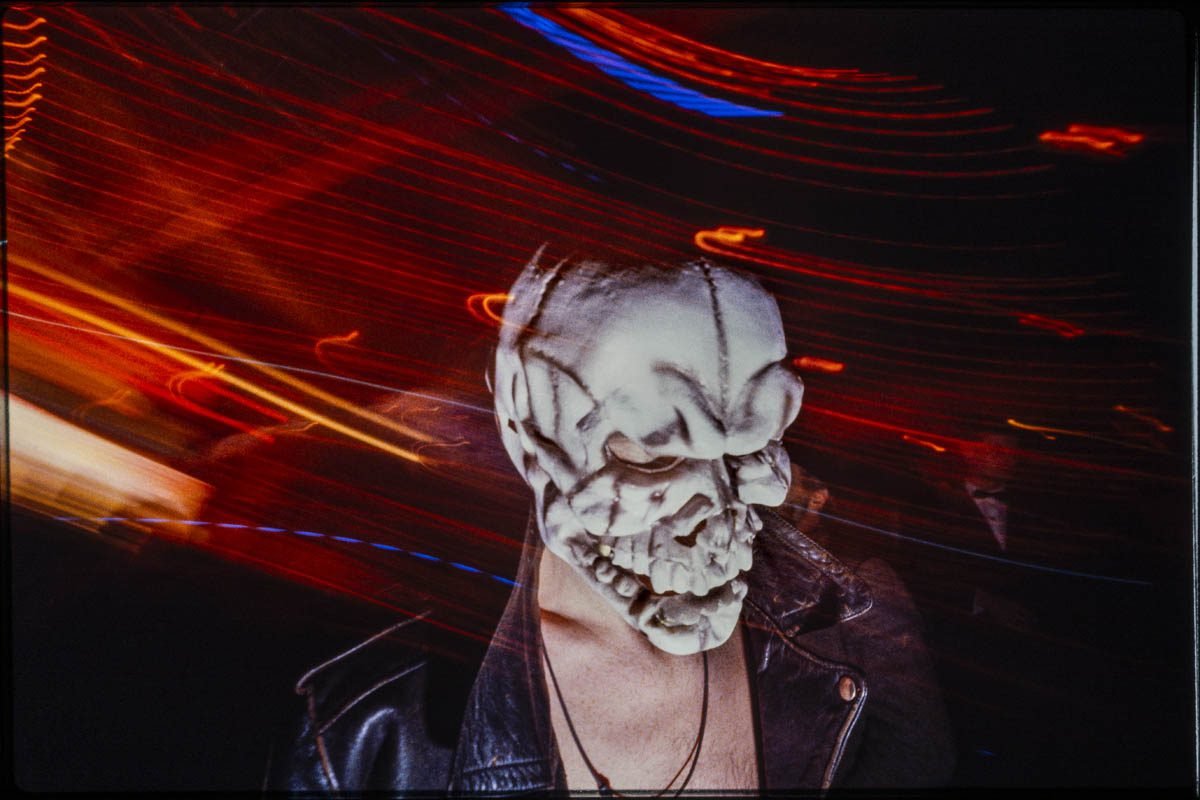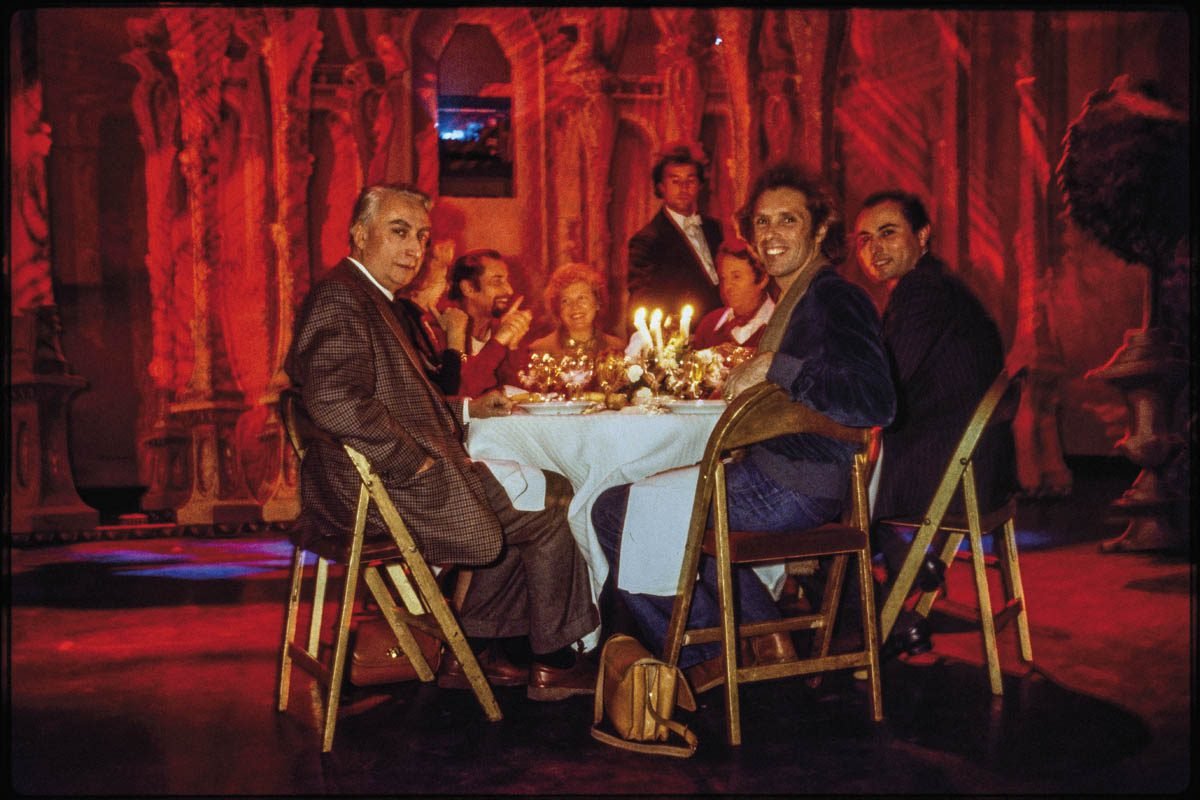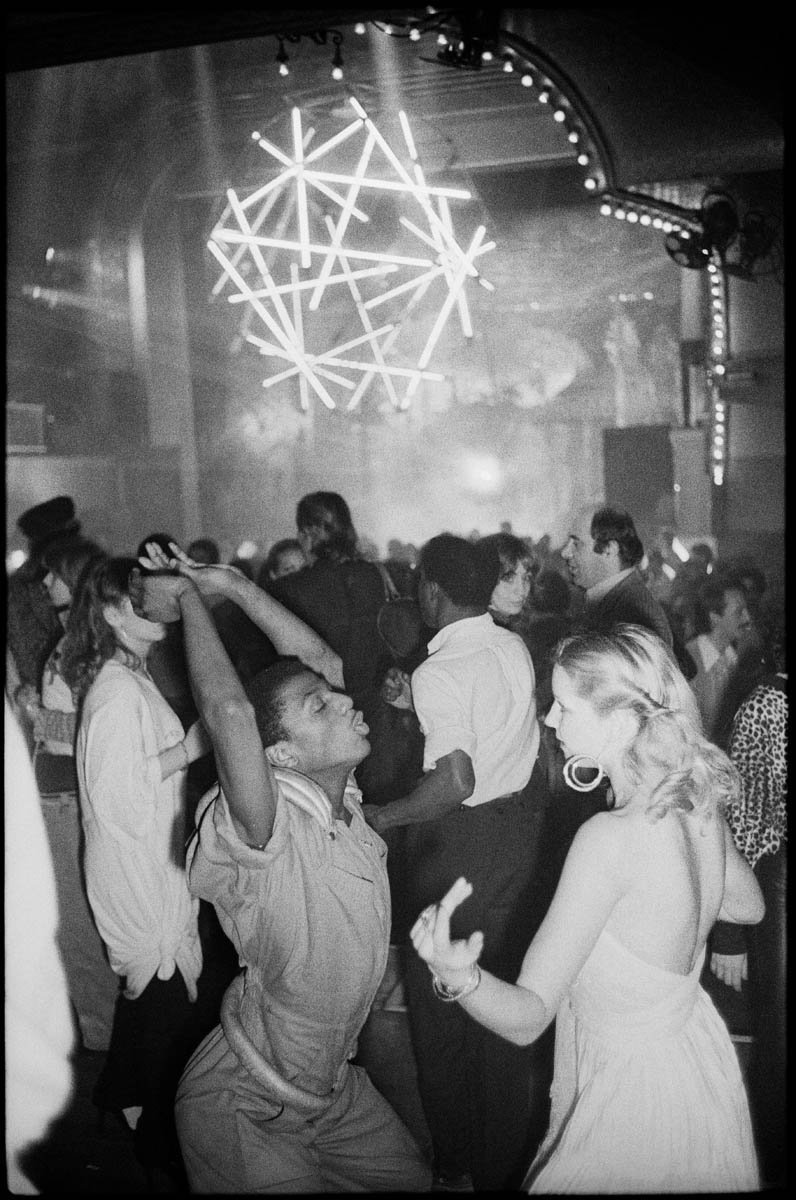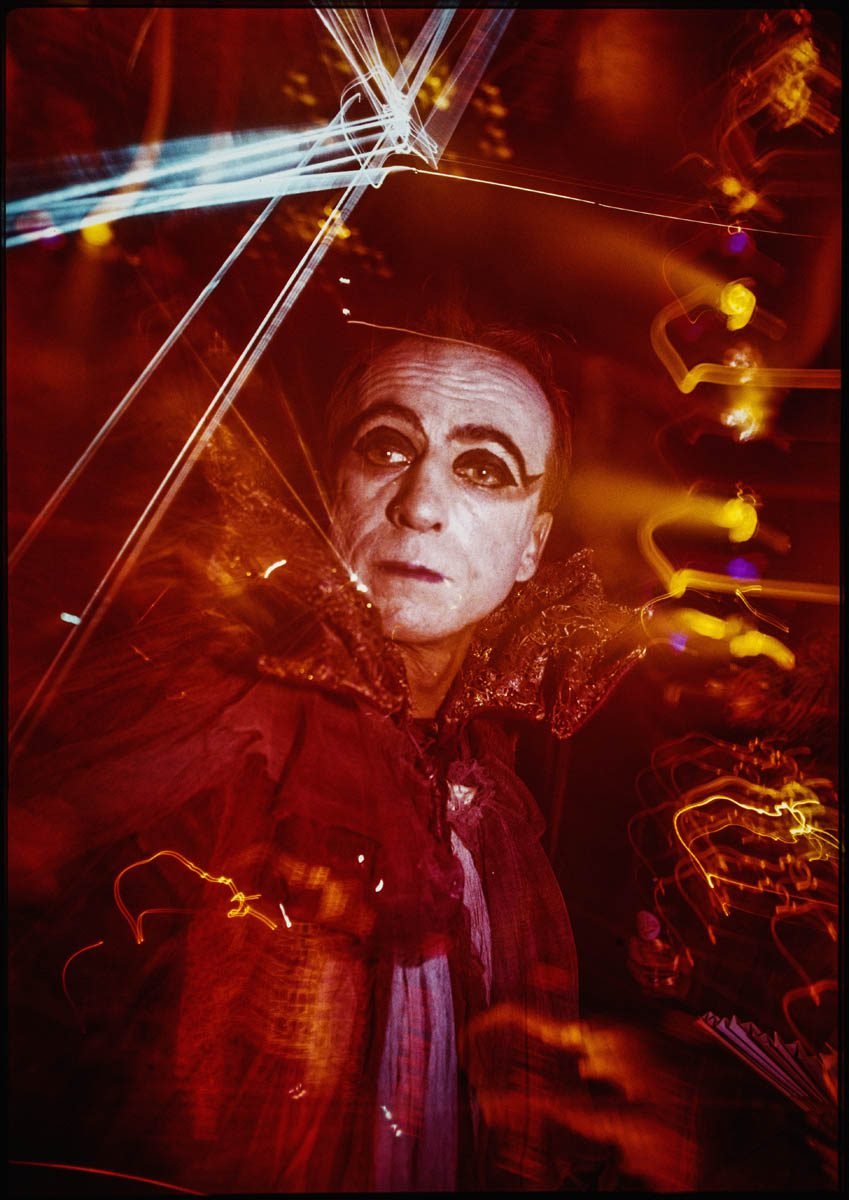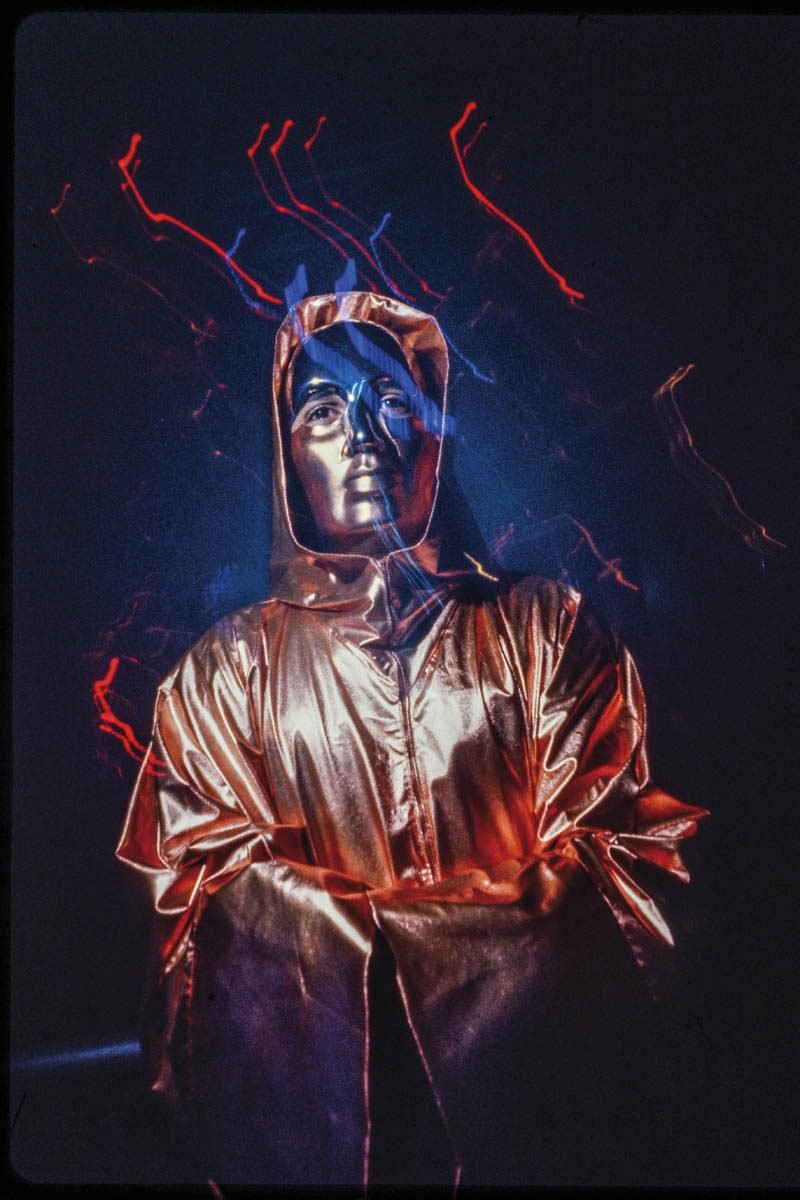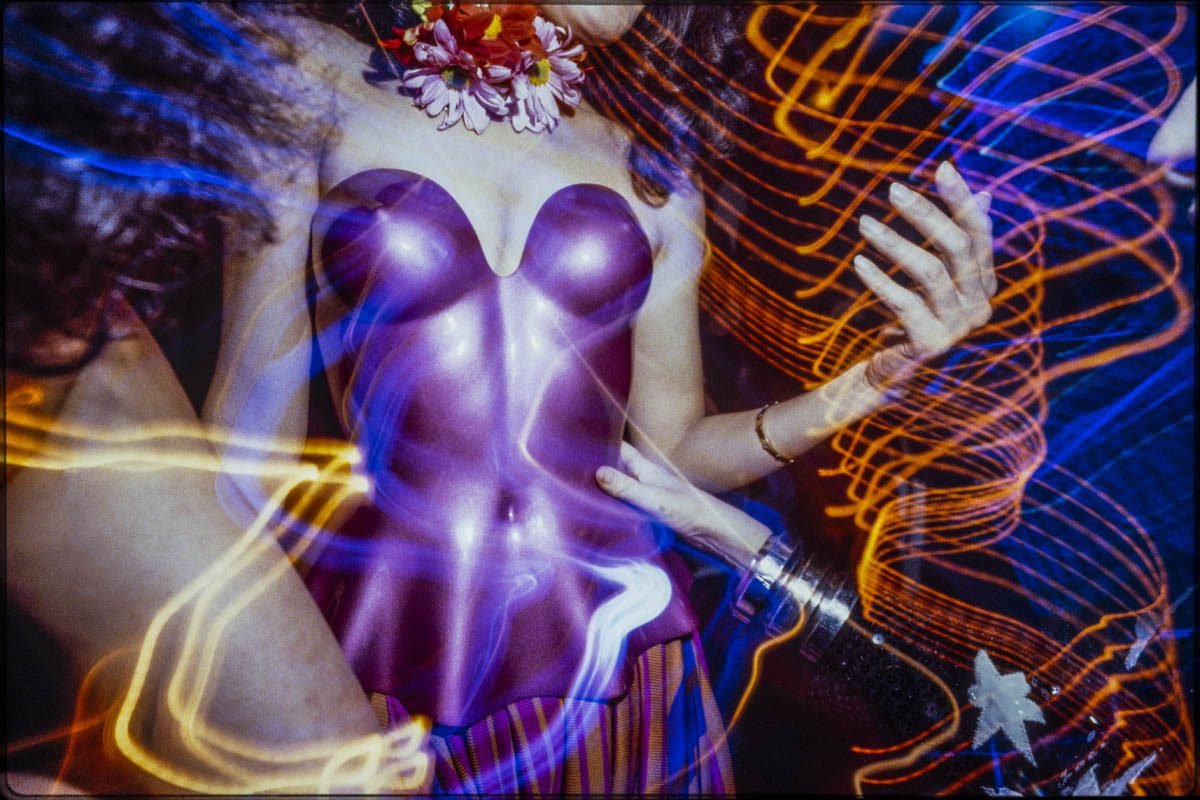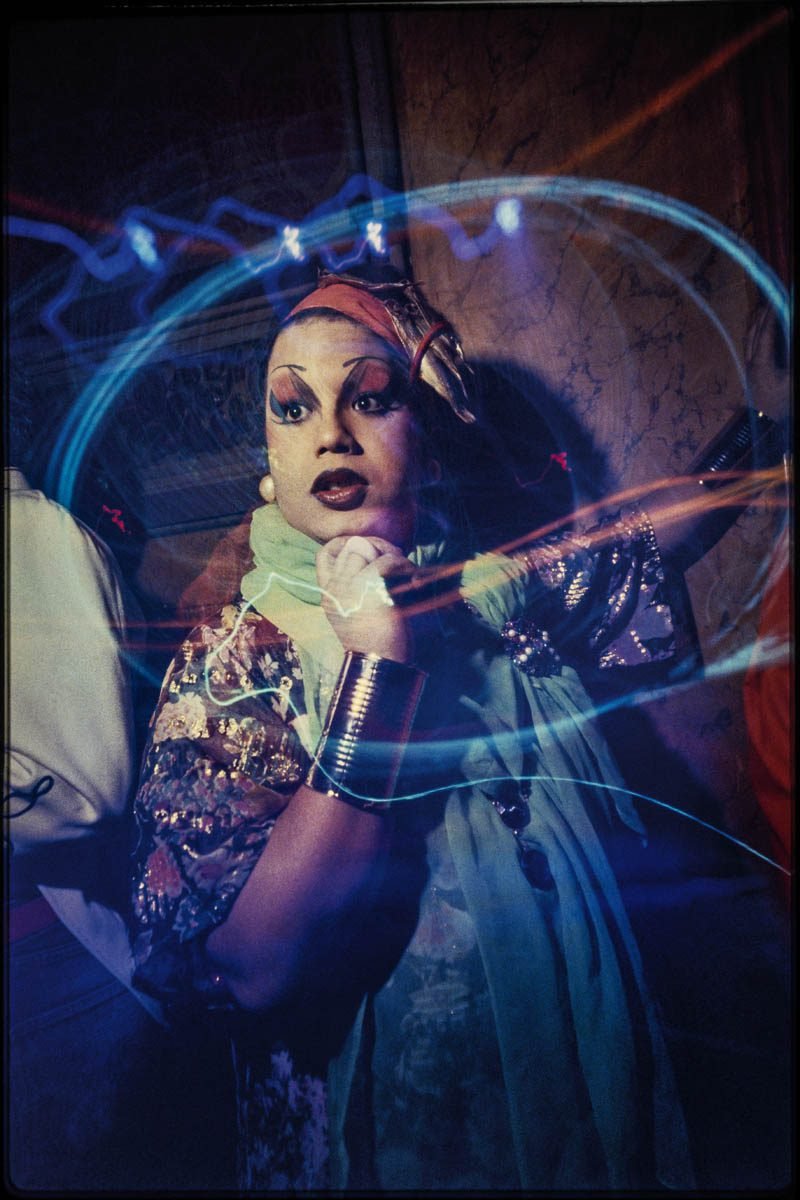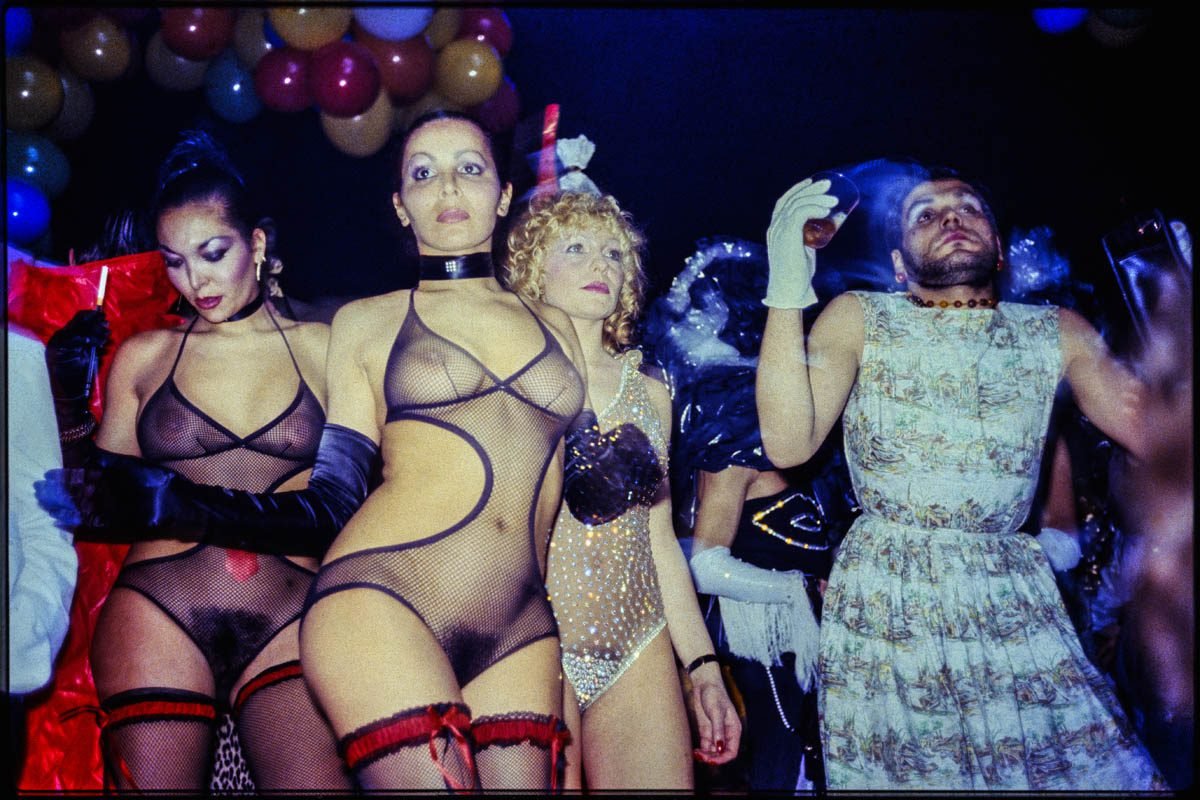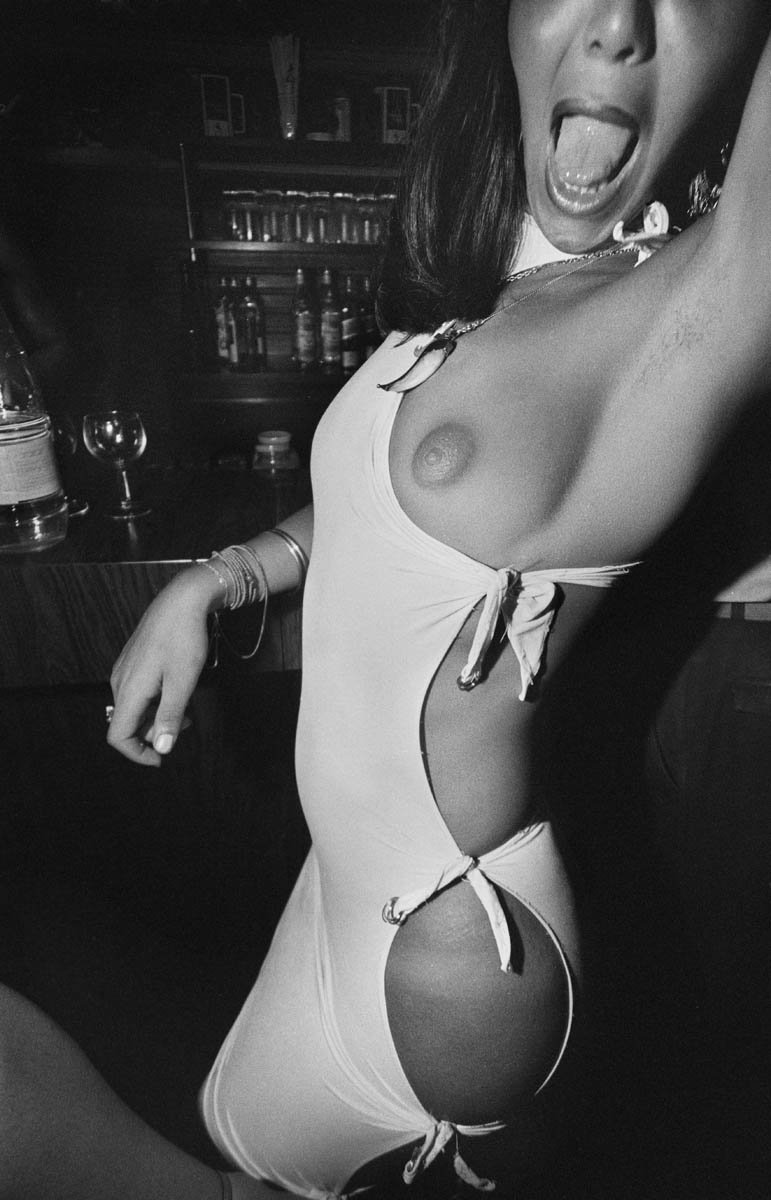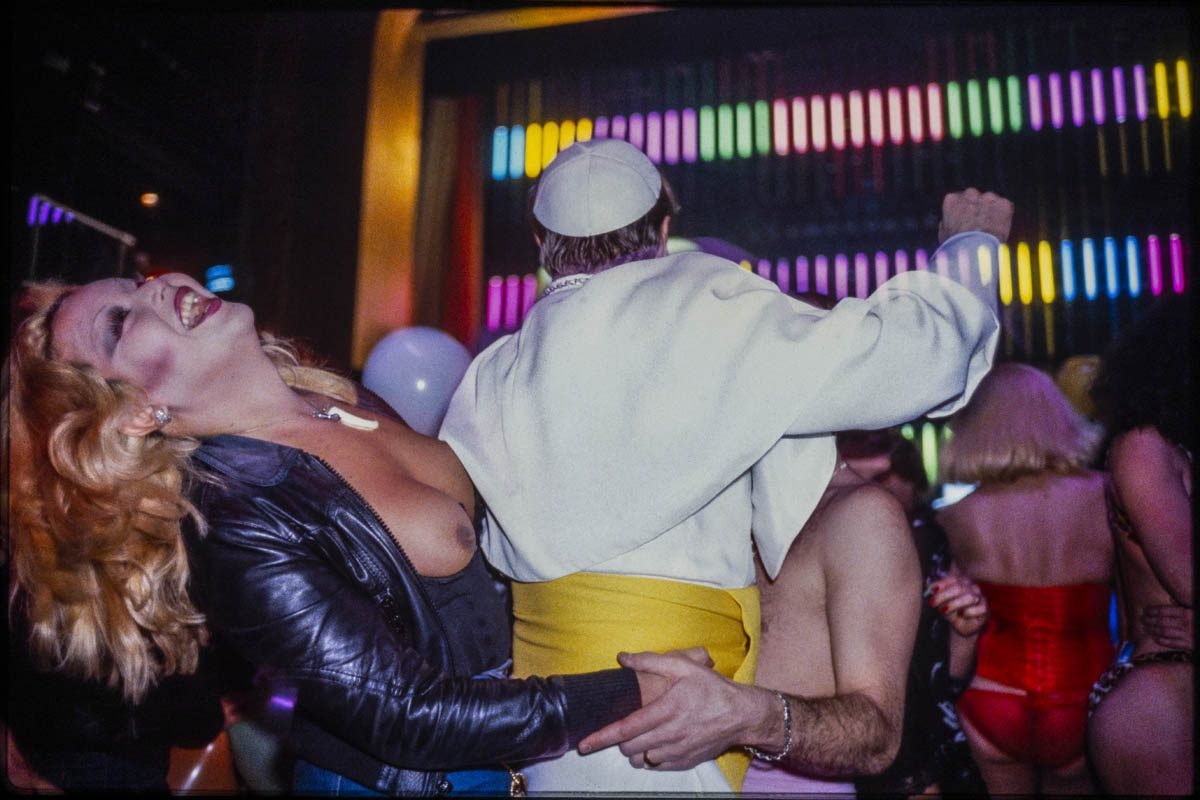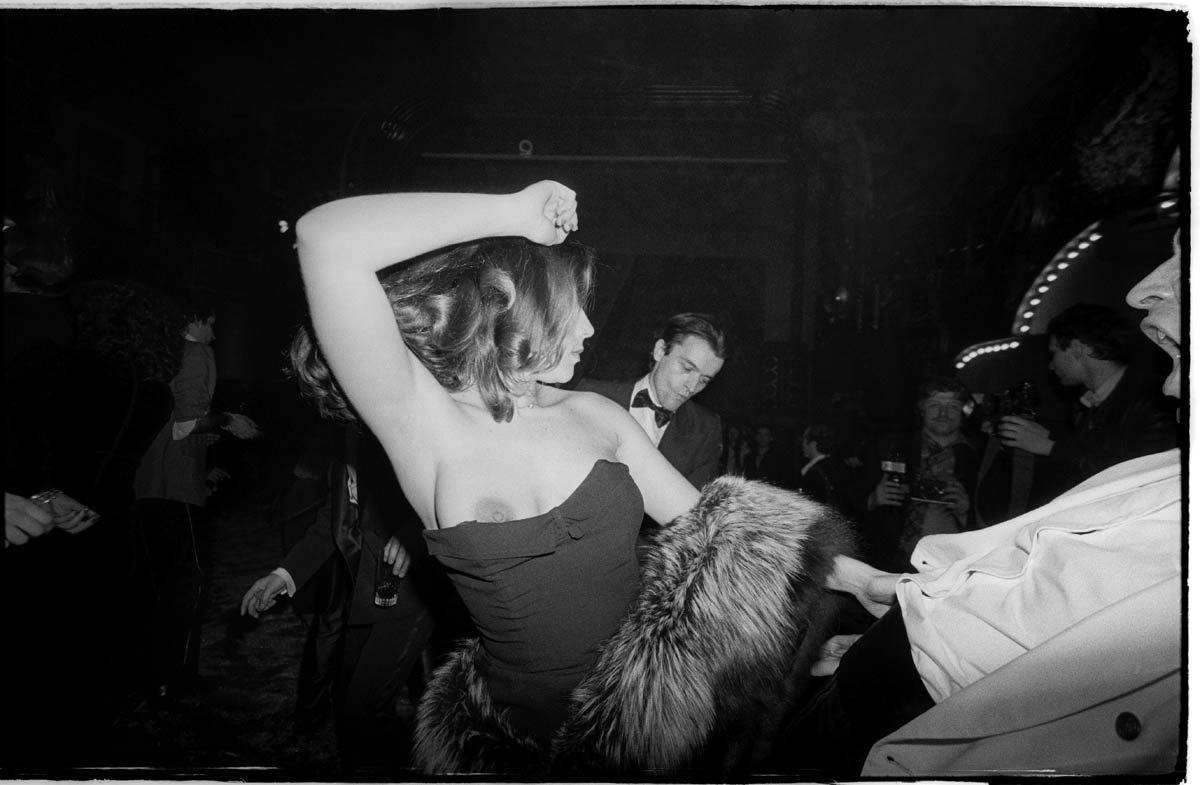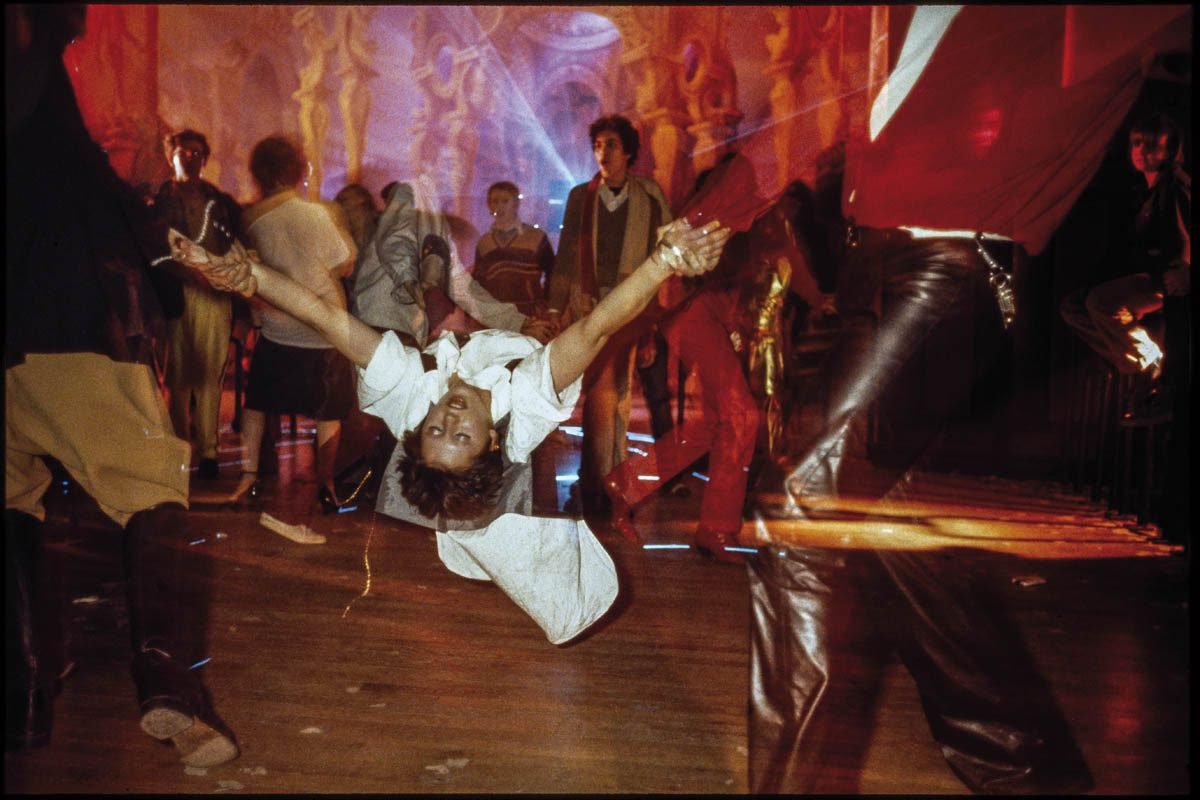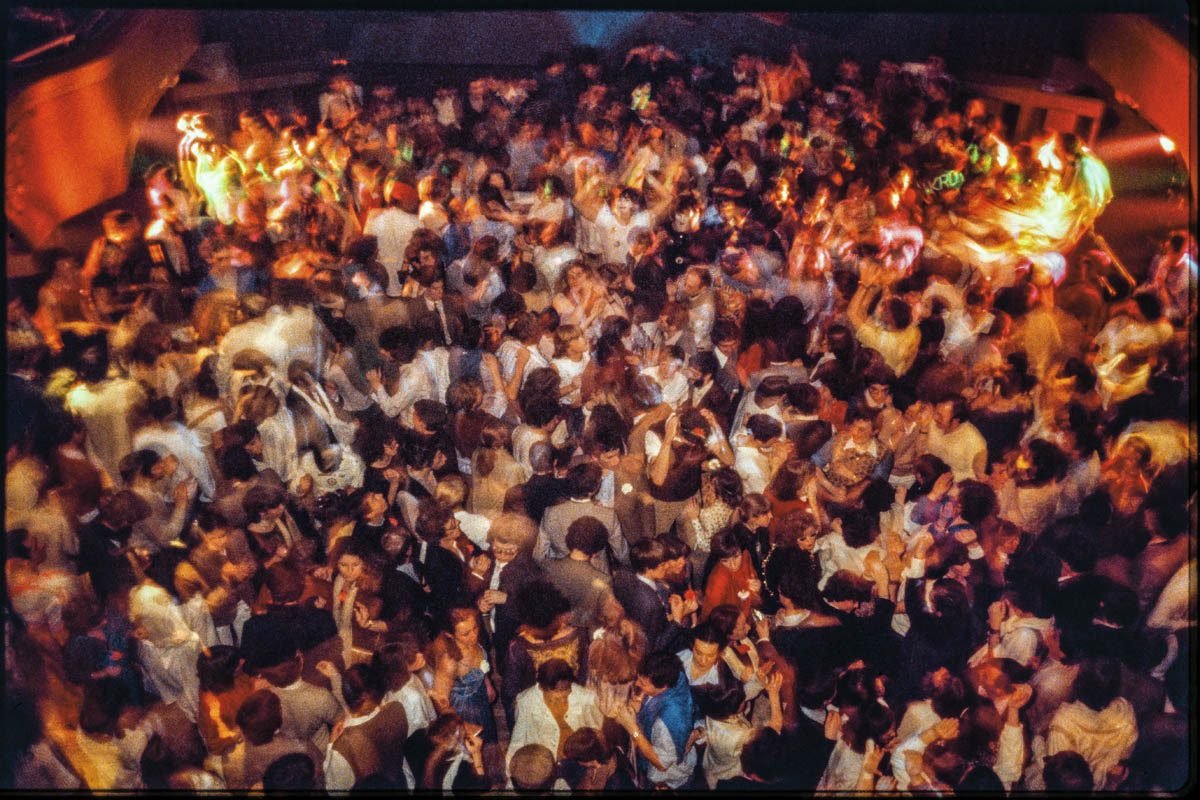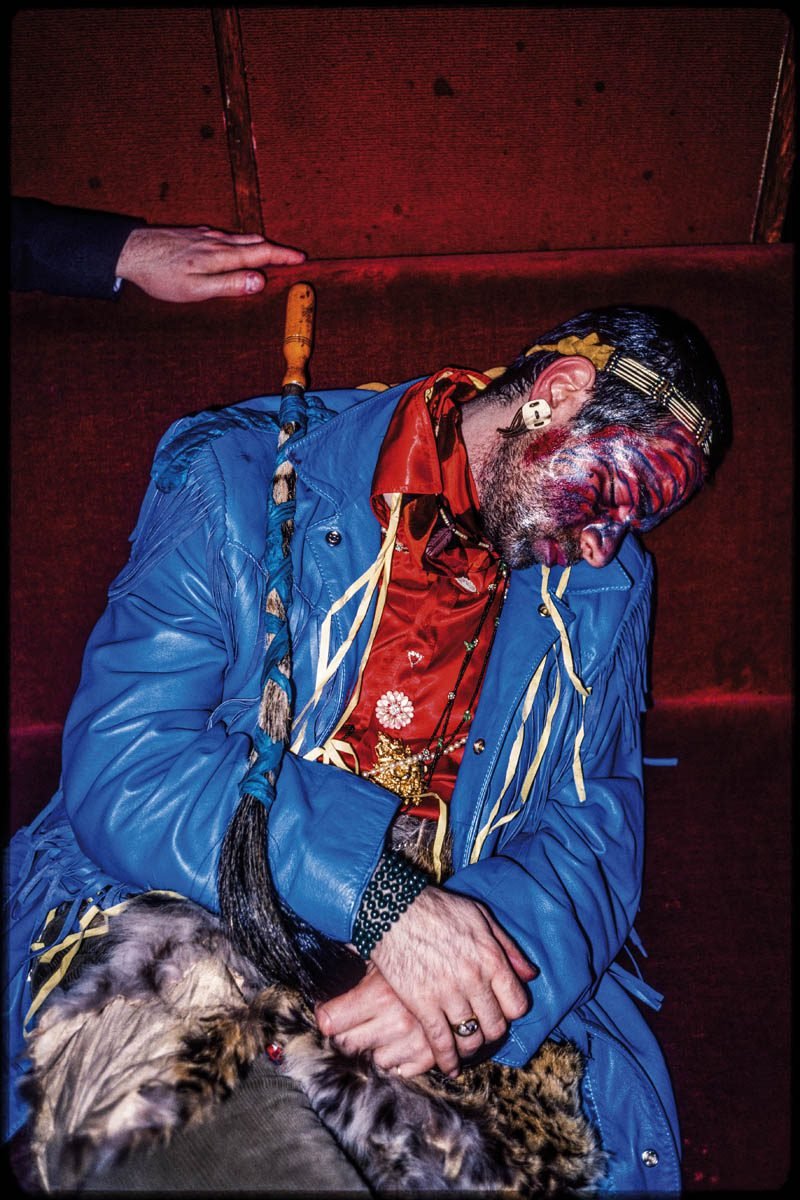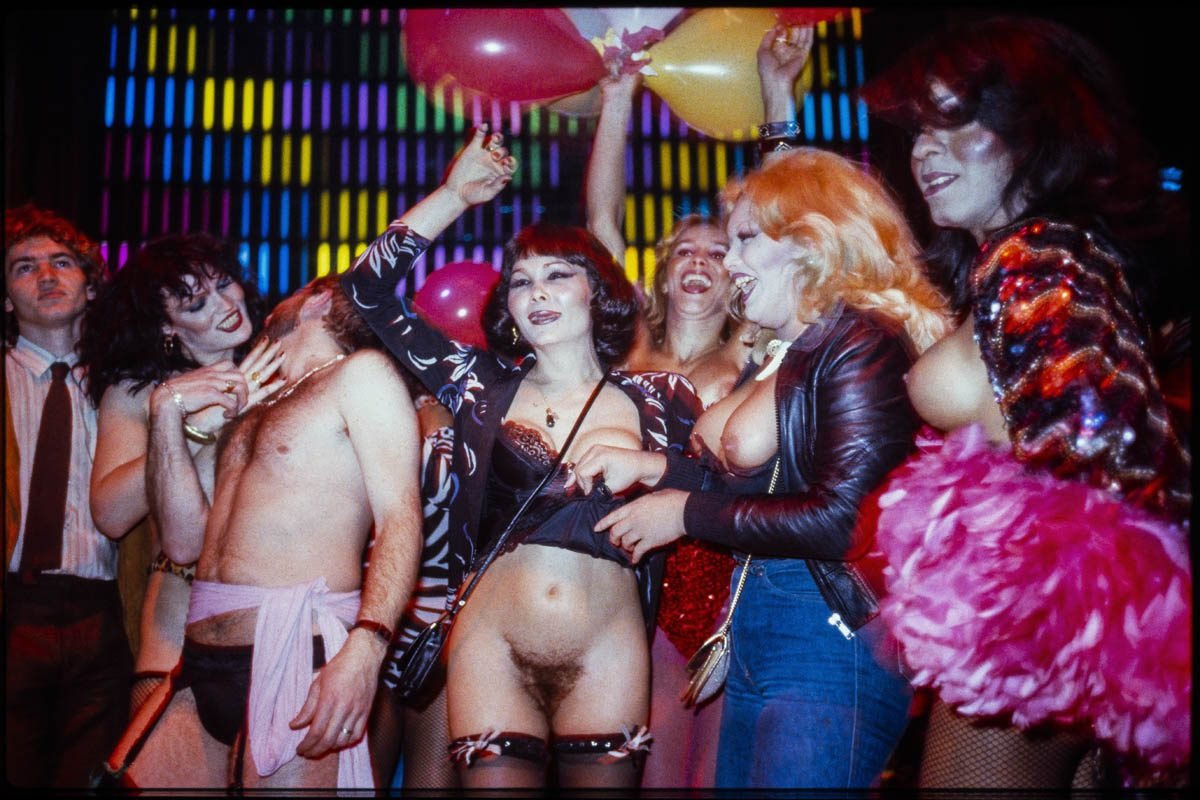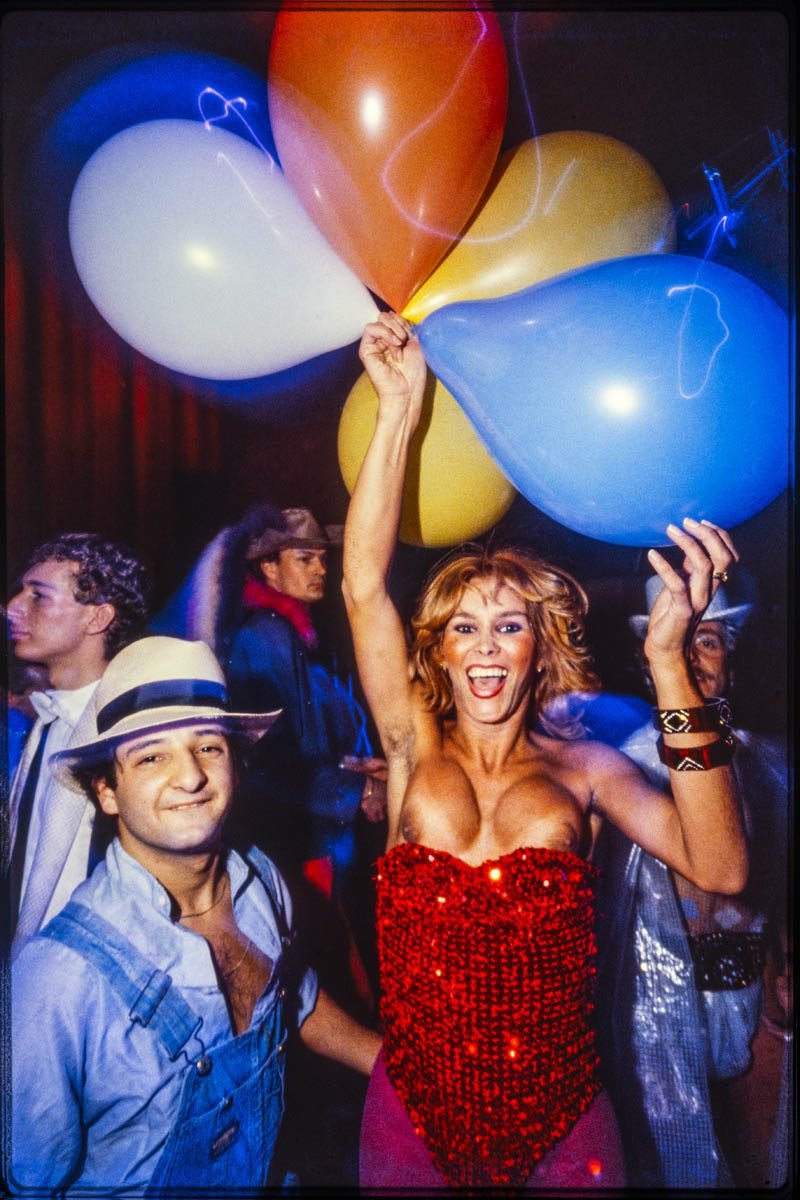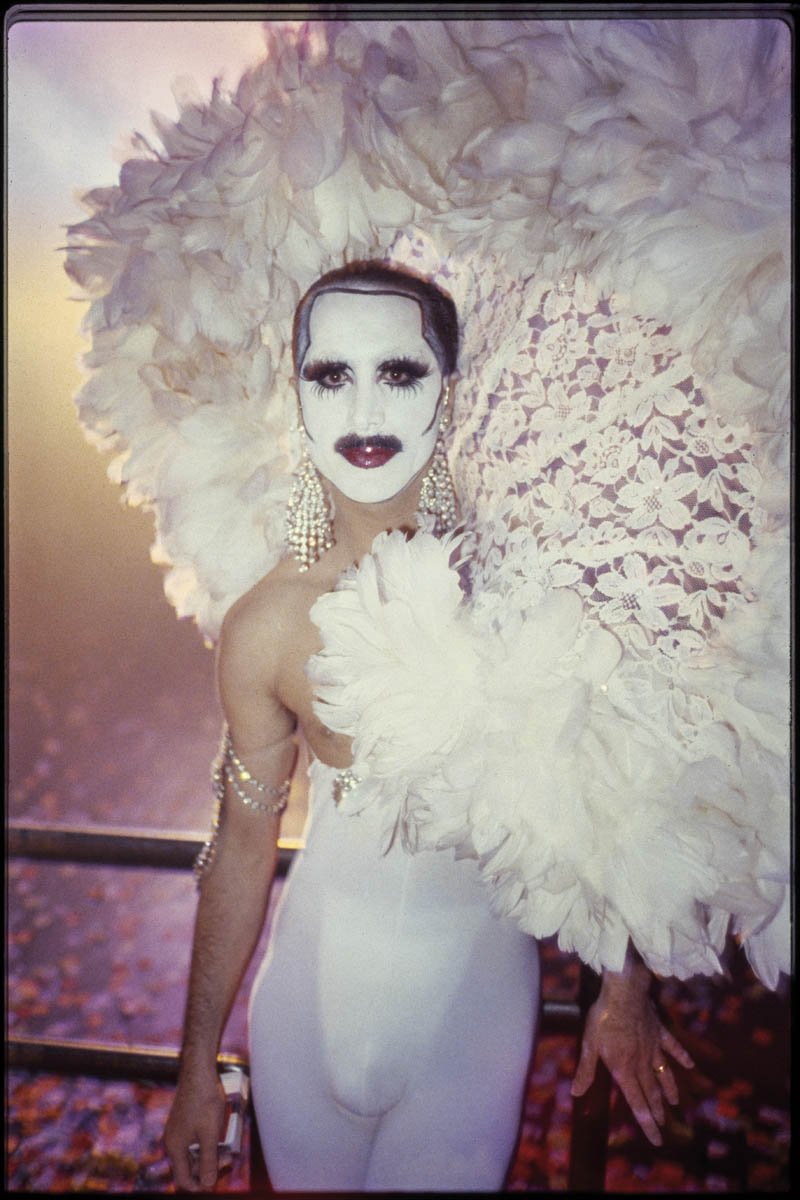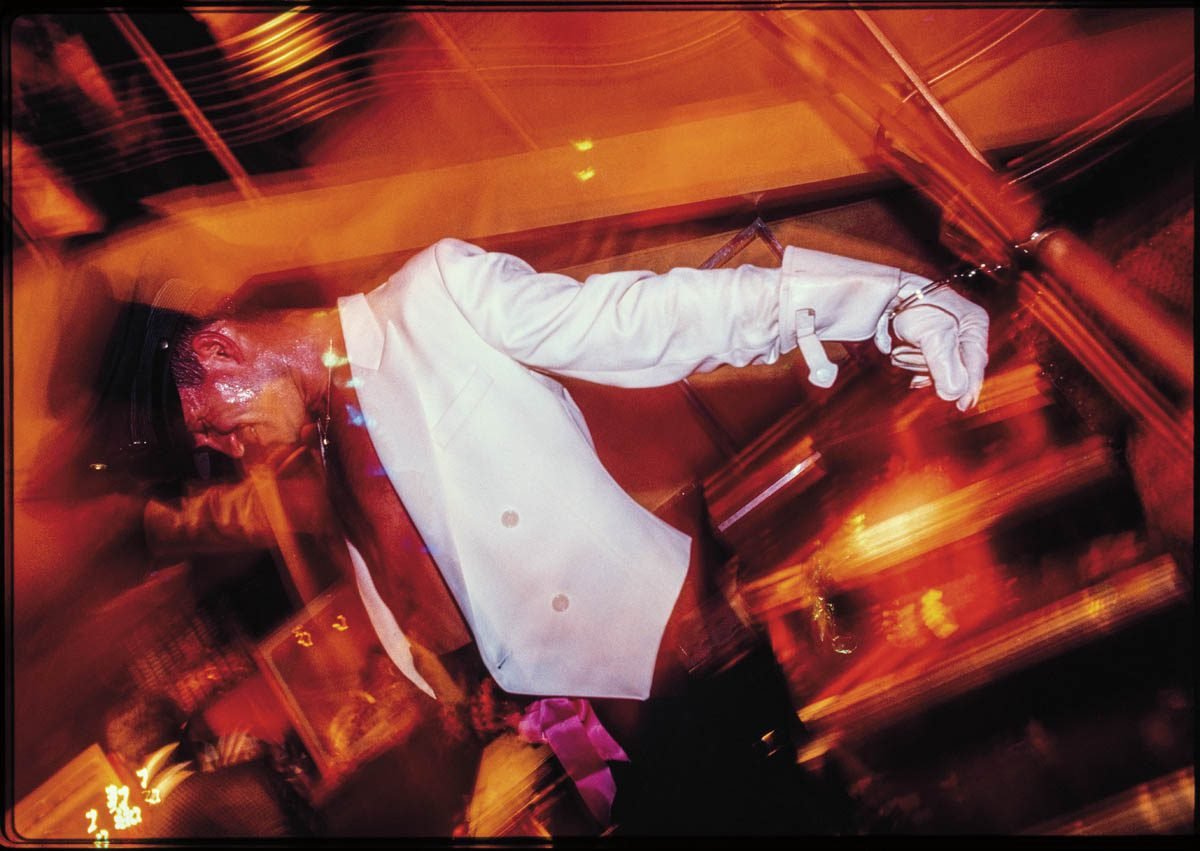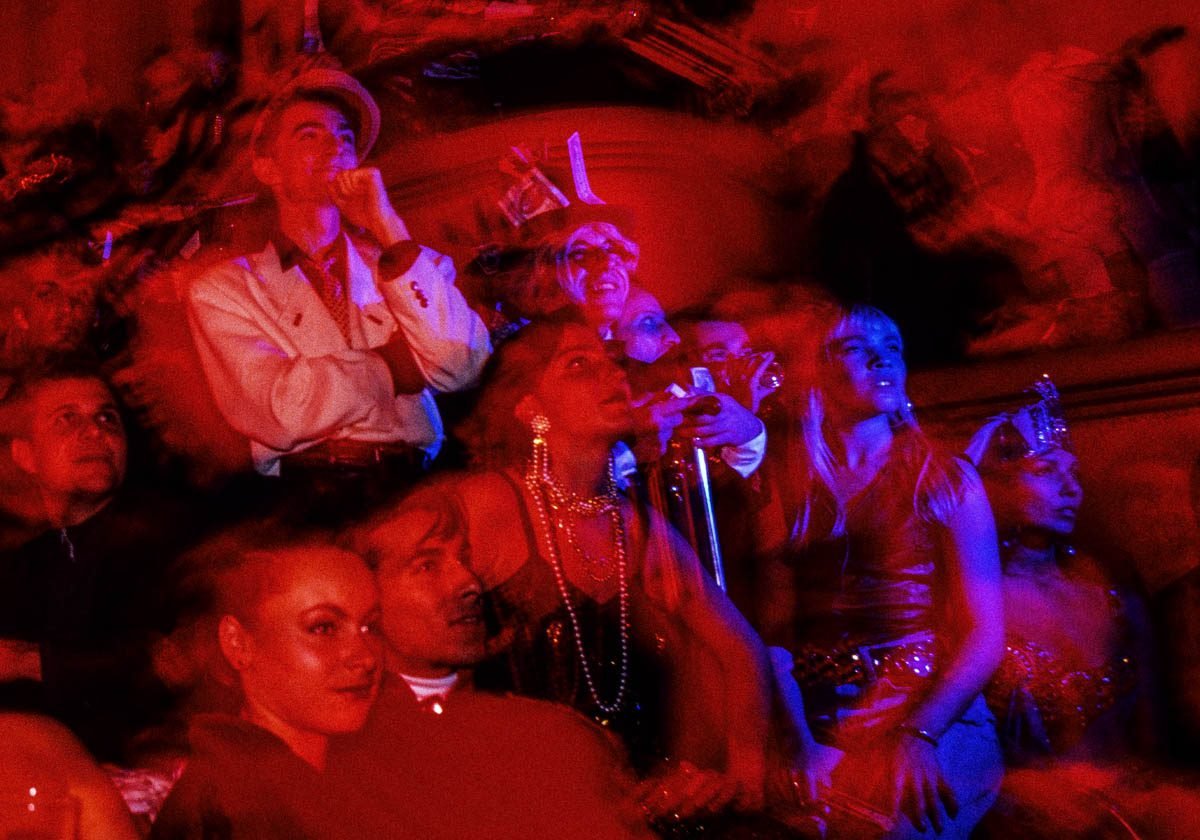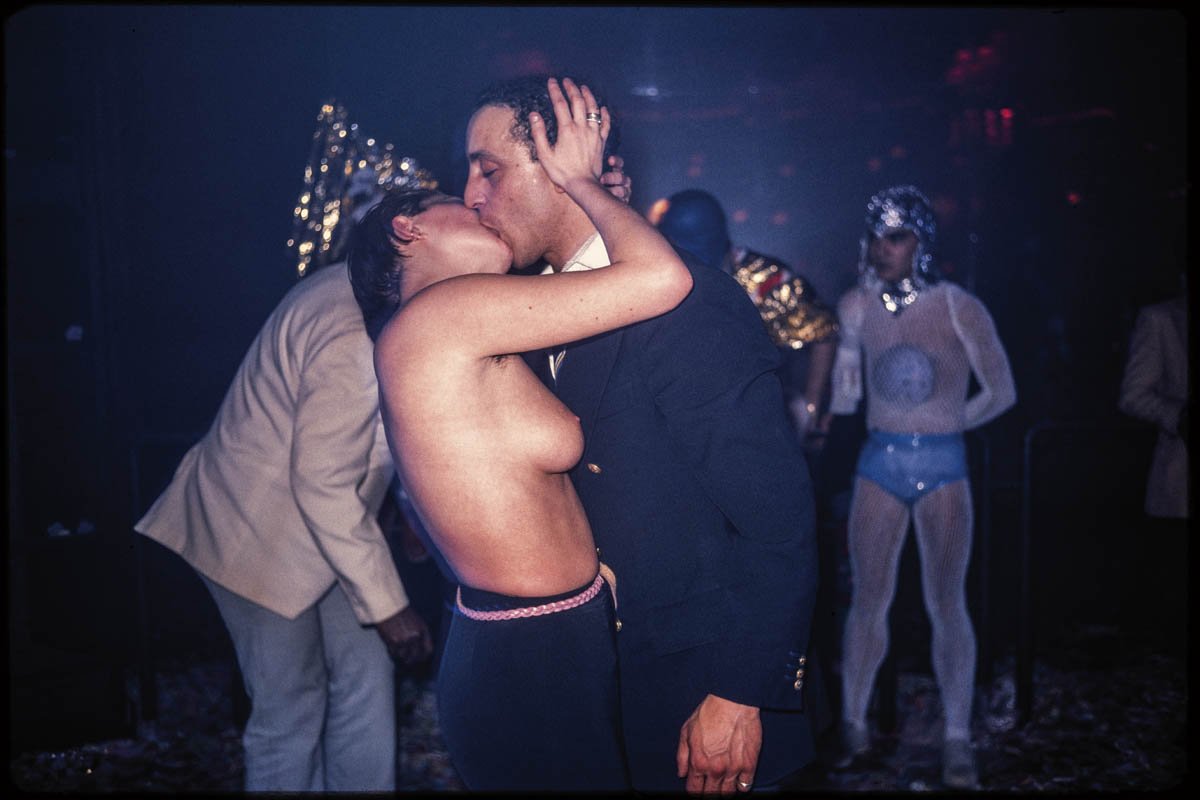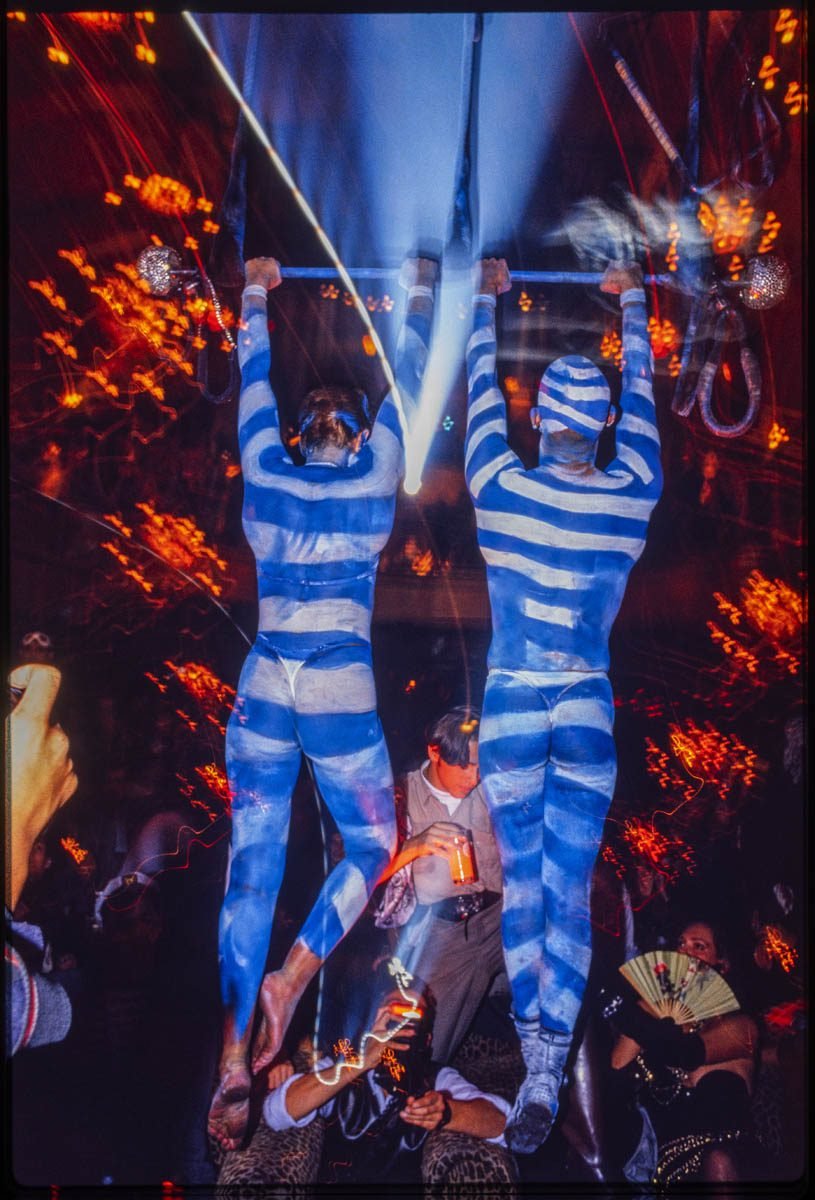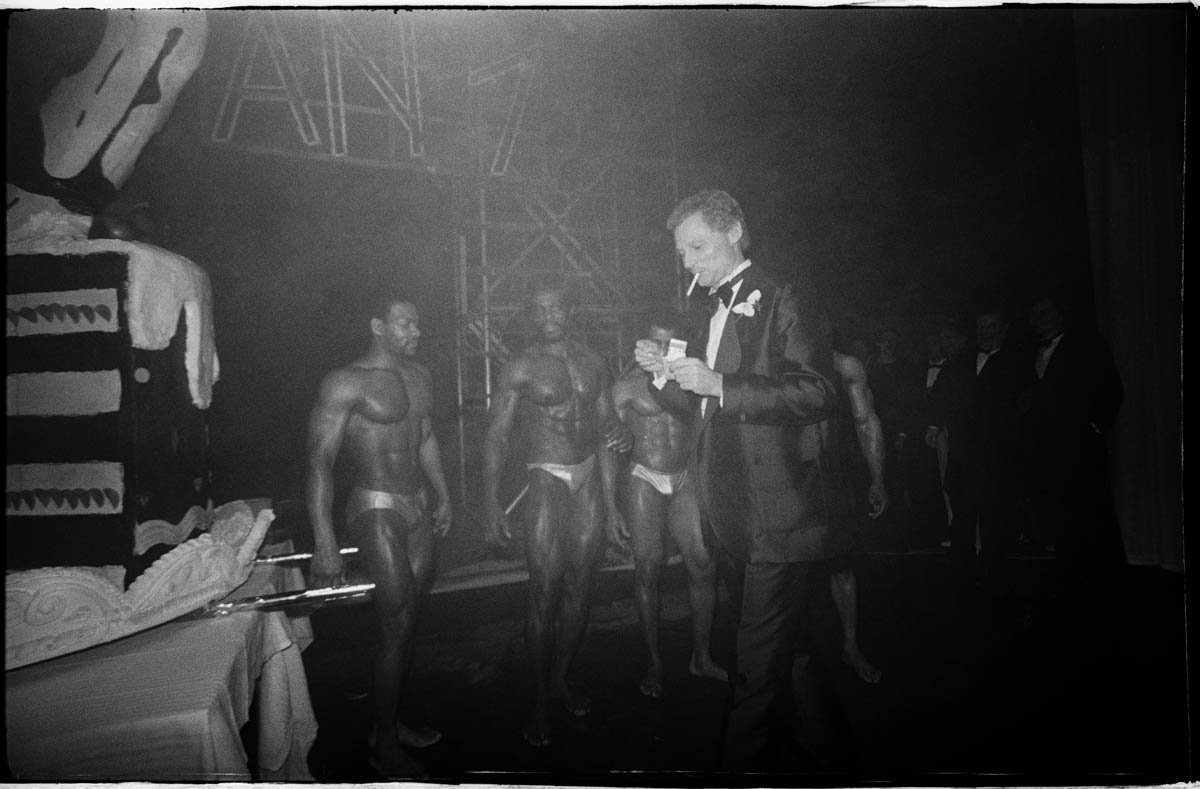Le Palace
by Arnaud Baumann
“A period of carefreeness, beauty born from the mixture of genres and atmospheres”
A Few Words About Le Palace
“Works created during memorable evenings at the Palace, which are now part of the photographic heritage and bear witness to a bygone and inimitable reality”
LE PALACE
April 1978, Le Palace opened its doors. Like the famous Studio 54 in New York, this essential Parisian nightclub marked its era well beyond its walls and remains, even today, the symbol of enjoyment, freedom and carelessness.
Its relentless evenings bring together, alongside French and international stars from the world of music, fashion and cinema: people who come to party without taboos or limits. A rhythmic melting pot of sounds of pleasure, intoxication and disinhibition make this place one of the pillars of the emergence of gay culture.
Markers of an era and a carefree vision of life, the extravagance and freedom of the Palace parties will never be matched.
THE WORKS OF ARNAUD BAUMANN
The famous portraitist Arnaud Baumann made his debut there. For five years, he wandered among explosions of life and pleasure to offer us a unique vision: documentary and visual style photography whose long exposures make the colored lasers twirl and transport us to the heart of the party. His images, authentic and uninhibited, make us want to reconnect with the lightness of the time, to be able to be free.
Photographs of Le Palace in color are hard to come by. Arnaud Baumann makes them all the more lively and alluring with his original vision. Similar to a painter, he uses his camera like a brush and recreates in his images the laser-colored atmosphere of the intense nights of the famous Parisian nightclub.
Taken on Kodachrome film almost half a century ago, these images printed on metallic archival silver paper have already become vintage. Between visuals and archival documents, they are still accessible but inevitably destined to increase in value.
Arnaud Baumann’s photographs constitute an authentic testimony to the history of the arts, dance and pop culture through the exhilarating interlude offered by Le Palace.
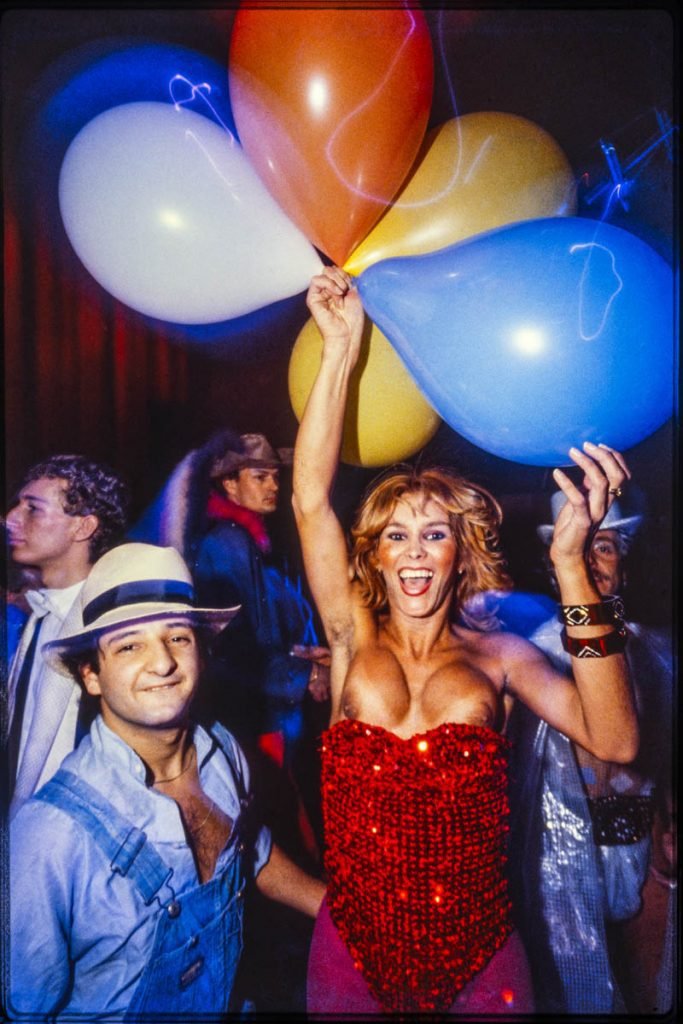
LE PALACE
April 1978, Le Palace opened its doors. Like the famous Studio 54 in New York, this essential Parisian nightclub marked its era well beyond its walls and remains, even today, the symbol of enjoyment, freedom and carelessness.
Its relentless evenings bring together, alongside French and international stars from the world of music, fashion and cinema: people who come to party without taboos or limits. A rhythmic melting pot of sounds of pleasure, intoxication and disinhibition make this place one of the pillars of the emergence of gay culture.
Markers of an era and a carefree vision of life, the extravagance and freedom of the Palace parties will never be matched.
THE WORKS OF ARNAUD BAUMANN
The famous portraitist Arnaud Baumann made his debut there. For five years, he wandered among explosions of life and pleasure to offer us a unique vision: documentary and visual style photography whose long exposures make the colored lasers twirl and transport us to the heart of the party. His images, authentic and uninhibited, make us want to reconnect with the lightness of the time, to be able to be free.
Photographs of Le Palace in color are hard to come by. Arnaud Baumann makes them all the more lively and alluring with his original vision. Similar to a painter, he uses his camera like a brush and recreates in his images the laser-colored atmosphere of the intense nights of the famous Parisian nightclub.
Taken on Kodachrome film almost half a century ago, these images printed on metallic archival silver paper have already become vintage. Between visuals and archival documents, they are still accessible but inevitably destined to increase in value.
Arnaud Baumann’s photographs constitute an authentic testimony to the history of the arts, dance and pop culture through the exhilarating interlude offered by Le Palace.
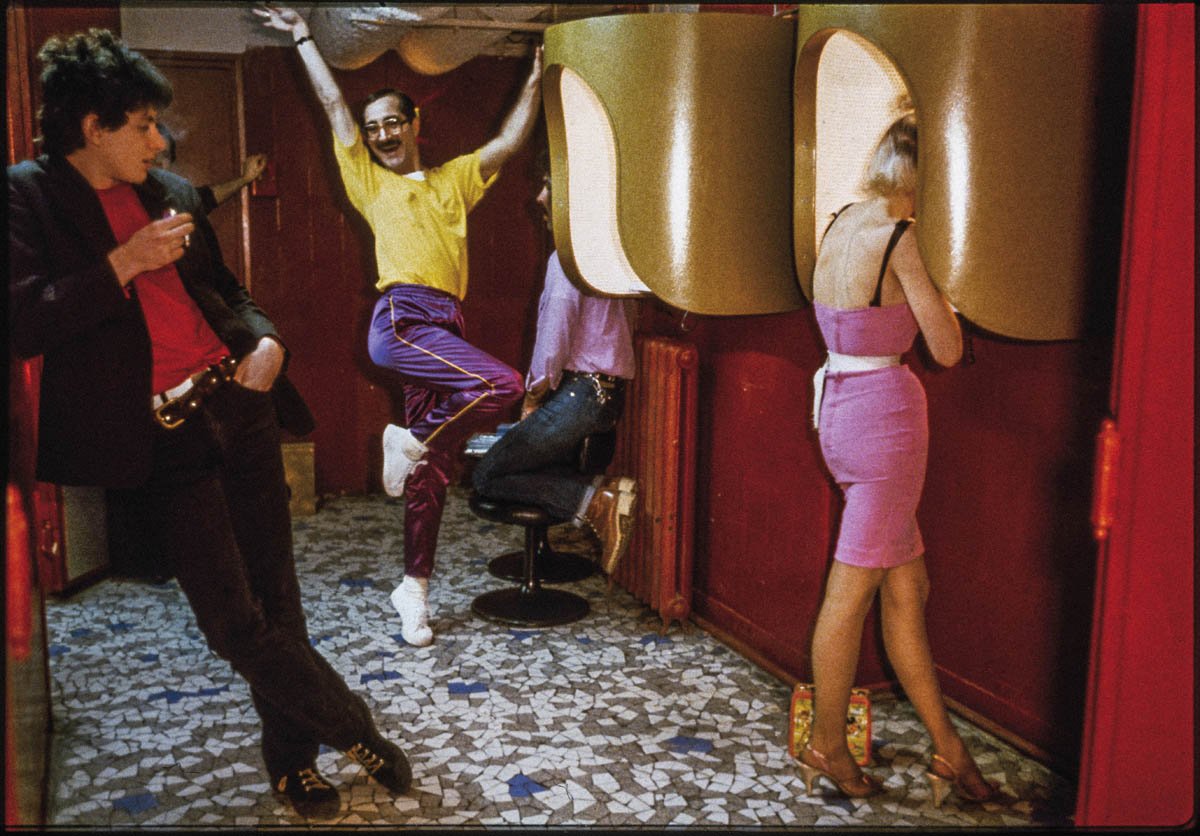
“He does not reproduce reality; he does not capture reality; he thinks it and he sees it."
Pacôme Thiellement, essayist
LE PALACE
1978–1983 – Silver prints on metallic paper, limited to 20 copies (all sizes included)
-
Modern Young Man
From 300 € -
Cat Woman in Fishnet Stockings
From 300 € -
Dance of Lasers
From 300 € -
Helmut & June Newton
From 300 € -
Mr Pee natural
From 300 € -
Glasses and Ashes
From 300 € -
Party With Friends
From 300 € -
Frilly
From 300 € -
Marilyn way
From 300 € -
In cage
From 300 € -
Squared Carnival
From 300 € -
The Photographers
From 300 € -
Dancing Couple
From 300 € -
Masked Kiss
From 300 € -
Carnival Penguin
From 300 € -
Couple in love
From 300 € -
Saturday night fever and lasers
From 300 € -
Back to the Balcony
From 300 € -
Skull for Carnival
From 300 € -
Roland Barthes & Maurice Bejart
From 450 € -
Laser Kiss
From 300 € -
Dancing Bartender
From 300 € -
Laser and Light Bath
From 300 € -
Fabrice Emaer and top model
From 300 € -
Karl Lagerfeld Kenzo party
From 300 € -
Anonymous Mask
From 300 € -
Bustier Issey Miyake
From 450 € -
Jenny Bel’Air
From 300 € -
Party with Friends
From 300 € -
Dancer’s Tongue
From 300 € -
Poppers
From 300 € -
Halo Dancer
From 300 € -
The Pope is invited
From 300 € -
Free Dancer
From 300 € -
Saturday night fever
From 300 € -
Dancefloor
From 300 € -
KO
From 300 € -
Nude Laser
From 300 € -
Party With Friends
From 300 € -
Overflowing Joy
From 300 € -
Mister Pee
From 300 € -
Handcuffs
From 300 € -
Projection
From 300 € -
The Kiss
From 300 € -
Black and white kiss
From 300 € -
Trapeze Artist
From 300 € -
Fabrice Emaer and bodybuilders
From 300 €
When word spread...
The Palace Years
…It was a time when Claude Nougaro sang “Sur l’écran noir de mes nuits blanches Moi je me fais du cinéma Sans pognon et sans caméra”. On Rue du Faubourg Montmartre, Nougaro was heard less than Grace Jones, who was seen arriving straight from the flight to the Palace stage, dressed and redesigned by Jean-Paul Goude.
A fabulous, sentimental moment, which there was no shortage of. It was between 1978 and 1983, during the heyday of this former theater, which, thanks to the magic touch of Fabrice Emaer, had become a place where Thierry Le Luron, Alice Sapritch, Yves Mourousi among others, had taken us from their Sept on rue Saint Anne to this immense space, a period of carefree beauty born of the mix of genres and atmospheres.
In fact, no one was really into cinema here, apart from nights reinventing the tradition of masked or fancy balls, but everyone, with more or less flamboyant doses of ego, was themselves. Certainly because Jenny Bel’Air and Sylvie Grumbach, depending on the mood of the moment and with an innate – sometimes highly unfair – sense of proportion, could refuse entry to a prominent personality who was furious to see three little beurs slipping smoothly inside. Many were anonymous and many were celebrities, those of the fashion world – Kenzo, Yves Saint-Laurent, Karl Lagerfeld, Claude Montana, Jean-Charles de Castelbajac – who crossed paths with Roland Barthes, who was often present, as well as Amanda Lear and other artists.
In the basement, at Le Privilège, decorated by Gérard Garouste by recommendation of Andrée Putman, we dined and bumped into the Palace’s minor stars almost every night: Christian Louboutin, Eva Lonesco and Vincent Darré. Having introduced Robert Mapplethorpe – a regular at Studio 54 in New York – to the spot, and having seen how desirable it was for a connoisseur of parties who later took us back there with Lisa Lyon, I still think to this day that there was an inexplicable magic about the place, for which “La vie en rose” reinterpreted by Grace Jones had become the anthem.
Models and jet-setters, graphic designers, young writers and journalists – starting with Alain Pacadis, who had made it “his” go-to and reserved a special place for it in his column in Libération – recounted it all much better than I could. They also listed all the people who “counted” in Paris at the time and who used to meet there. Numerous photographers have created a memory of these Palace years, as they must be called. These years, which were first and foremost nights, and which could sometimes take us directly from this immense nocturnal ship to the office for the morning editorial conference, have been amply photographed. Although, they were mostly – and sometimes very well – photographed in black and white. It’s deemed that it’s not without a certain nostalgia that we revisit some of these images today, some of these familiar faces, now lost to sight for some, and vanished for too many…
Excerpt from the preface for the book FÊTE AU PALACE Éditions CDP 2022
Le Palace Since 1983
by ALAIN PACADIs
In 1978, Fabrice Emaer had the idea of opening the biggest club in Europe on rue du Faubourg Montmartre, little did we know that our lives were about to take a new turn.
The first years of Le Palace saw a series of Baroque festivities, with a debauchery of music, fun and sumptuous costumes, that would remain like diamonds illuminating the crowns of the princes of the night.
From Karl Lagerfeld’s Venetian parties to Paloma Picasso’s wedding, Le Palace became the preferred meeting place for jet-setters, but it was also a place where young people from the suburbs could meet, attracted by so much glitz and glitter. It was a prestigious showcase decorated by Gérard Garouste, the greatest post-modern painter, where trends followed one another at an infernal pace: Punk and After-Punk, New Romanticism, Cold Wave, Nouveau Thermidorien, Novö, Post-Modern, After Junk, etc. The great couturiers came, accompanied by models wearing the most extravagant dresses in the collection, the Rock ‘n’ Roll Stars strolled between concerts, stars watched themselves live, and spied on by scoop-hungry photographers.
For years, under the multicolored lasers, one costume ball followed another: a mustachioed marquise danced with a gypsy stoned on poppers, macho-men bodybuilders rubbed shoulders with people from transgender communities, preppy people in tuxedos mingled with punks; Le Palace was an extraordinary melting pot where, at night, absolutely anything could happen. The club debuted at a pivotal moment: after the babas or leftist wanderings, at the height of the punk explosion, at a time when the youth were rediscovering pleasure and fun. We drank refined cocktails until dawn, dancing to hellish rhythms. Every evening, we’d find a new dance or trend. In this temple of aesthetics, diva makeup flowed over the hairy torsos of newly liberated gays. One day a week, it was the blacks who invaded the dance floor of this modern Harlem, and another, it was the gays. After Fabrice Emaer’s death, the Palace didn’t stop, and new management continues to keep the party going, but I’ll always be nostalgic for that period when we were just learning how to party.
At the time, Arnaud Baumann haunted the nights of the Palace, armed with a camera.
He took snapshots that blended poetry and aesthetics, not focusing on the stars like the others, but seeing the nightclub as a place inhabited by all walks of life. He took all series of photos with immense passion, but once they were finished, he had no desire to show his work. Now that they’ve aged and matured like fine wine, it’s time to take them out of the boxes and put them on display. It was truly a remarkable era.
